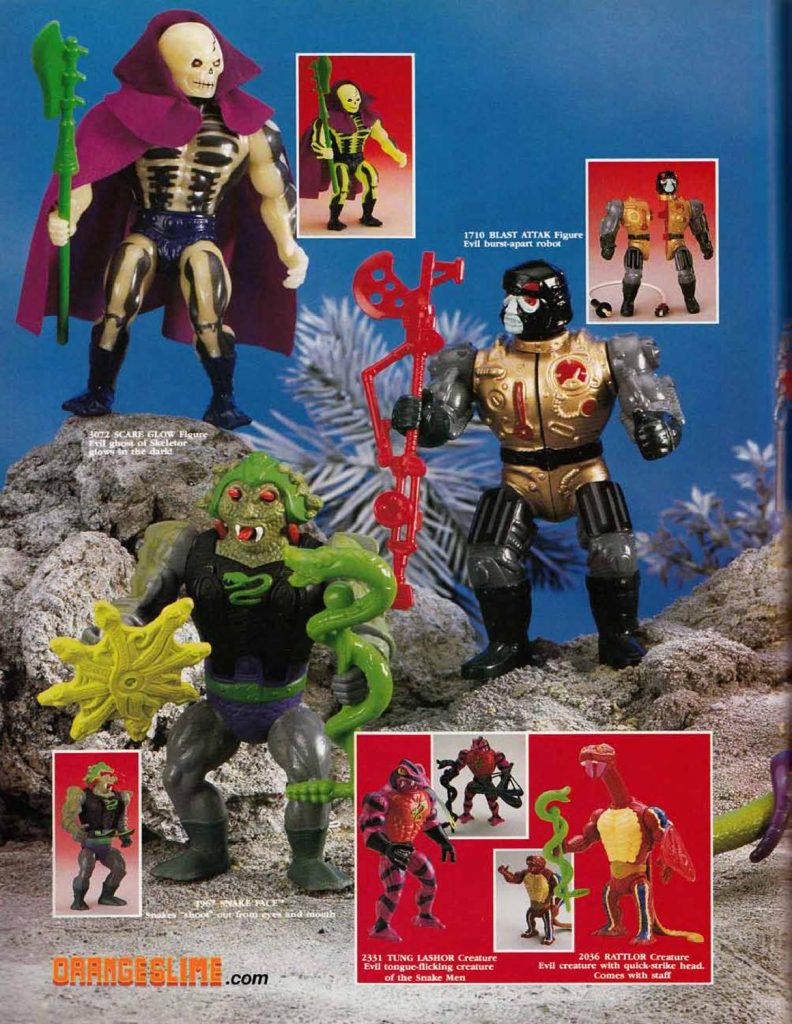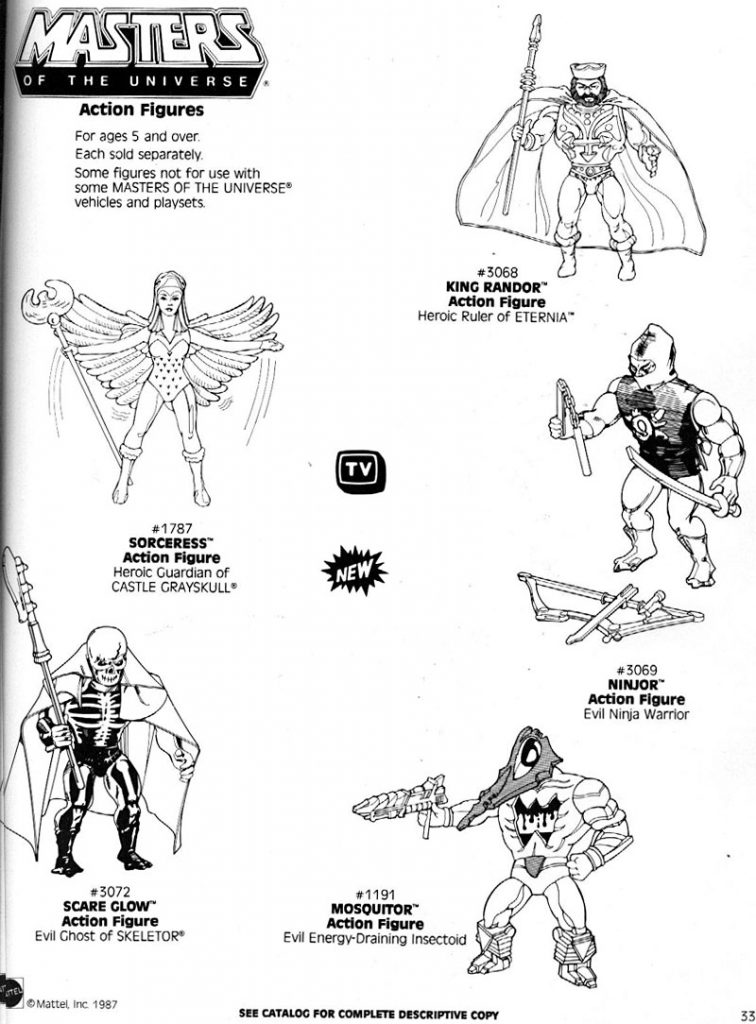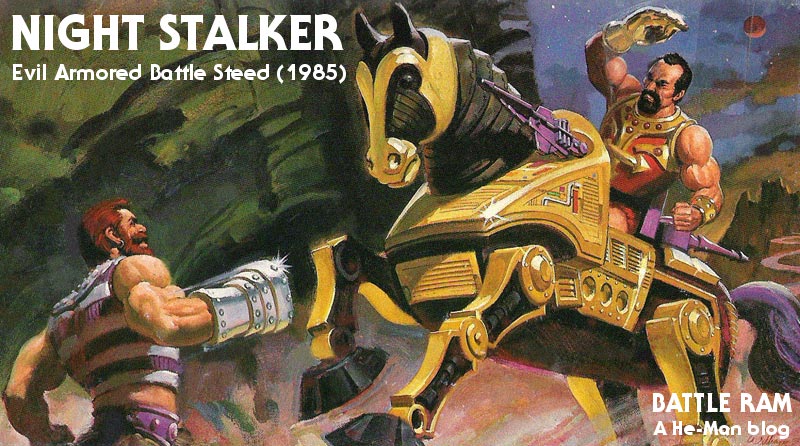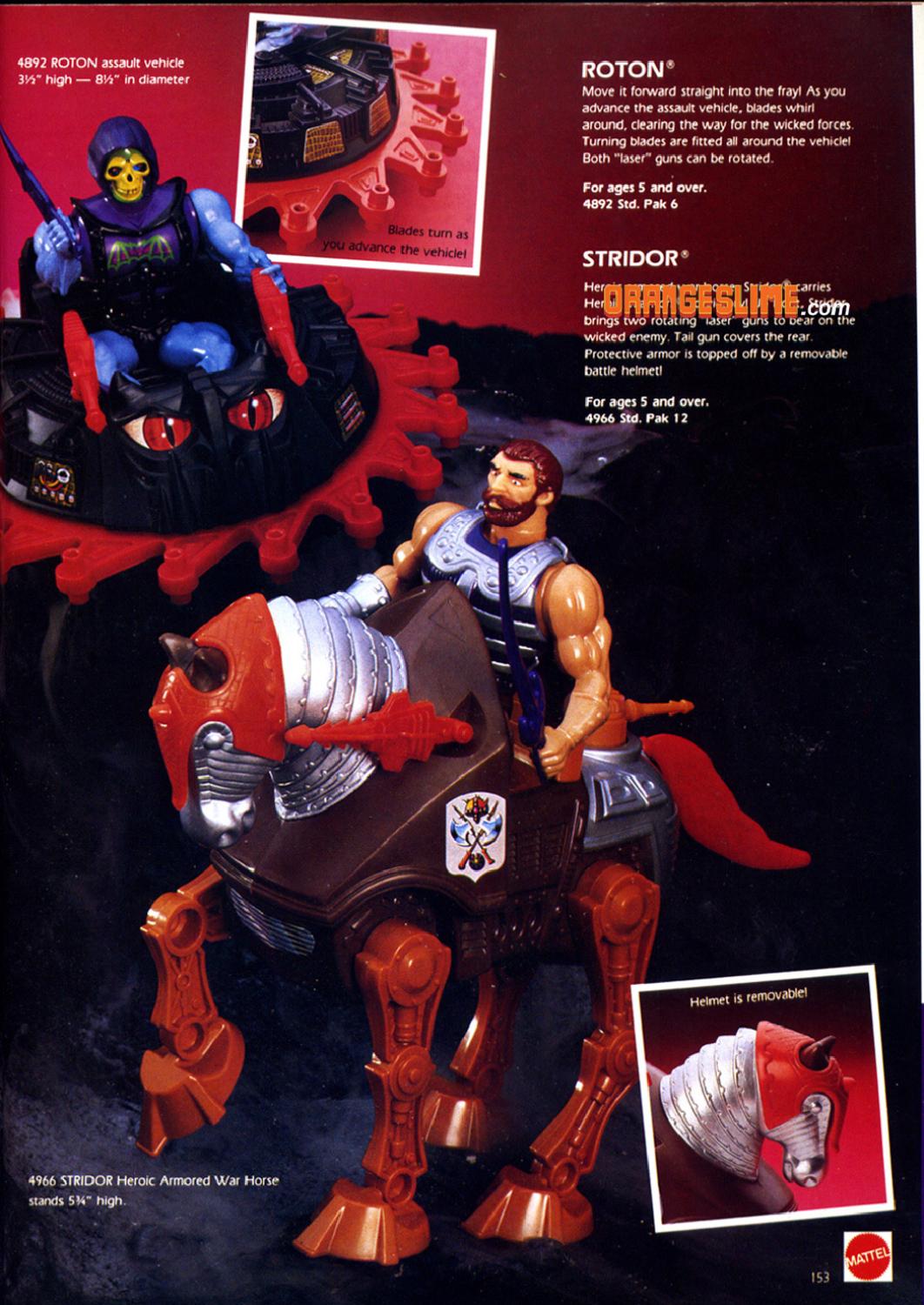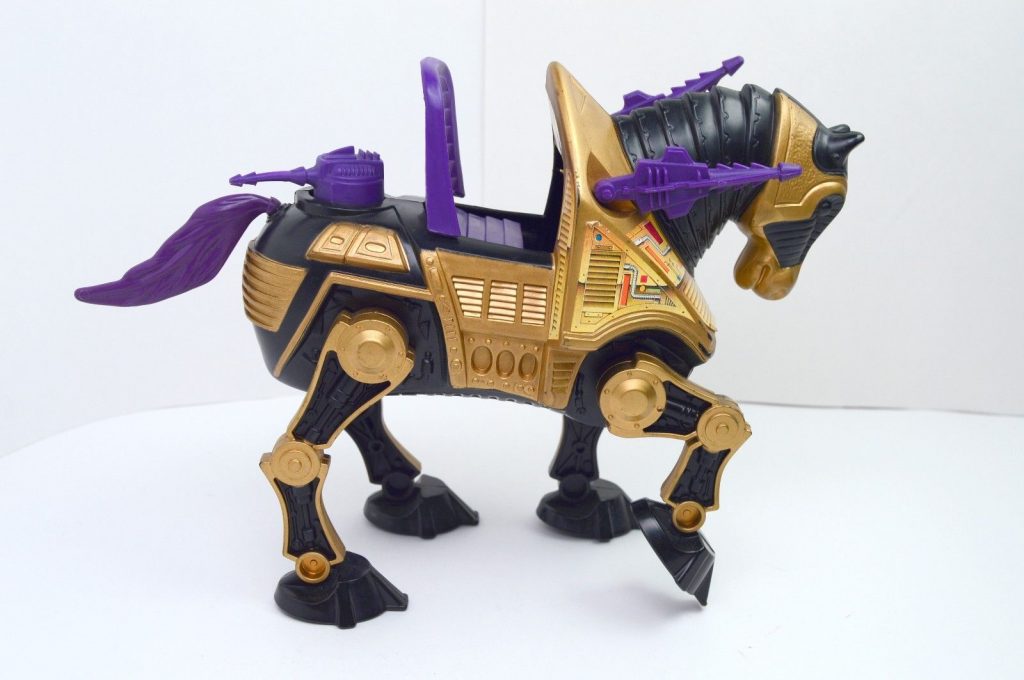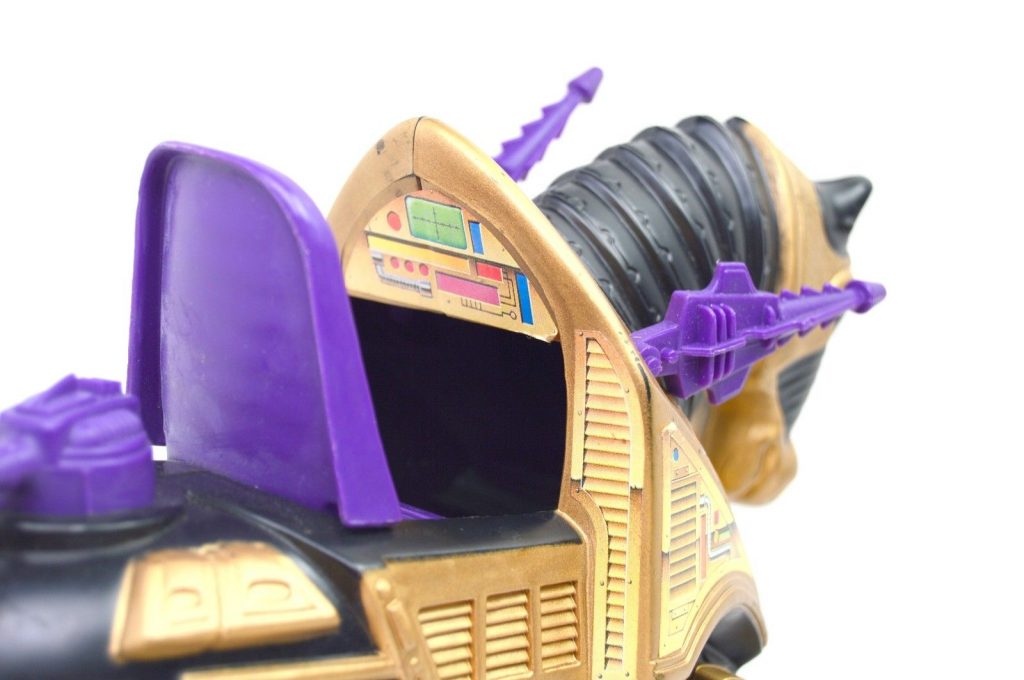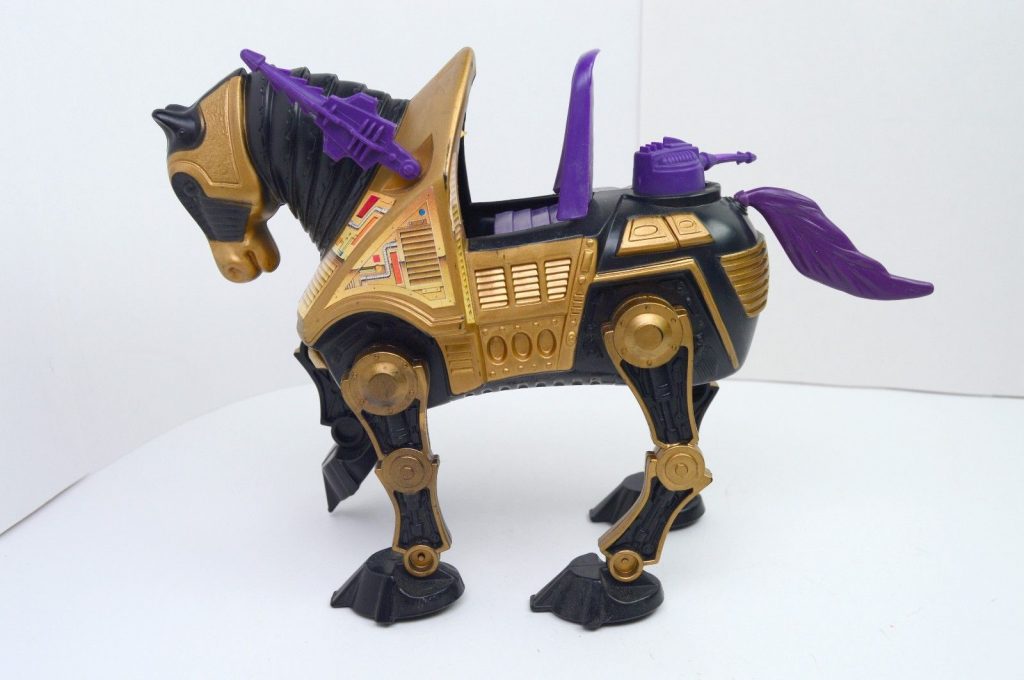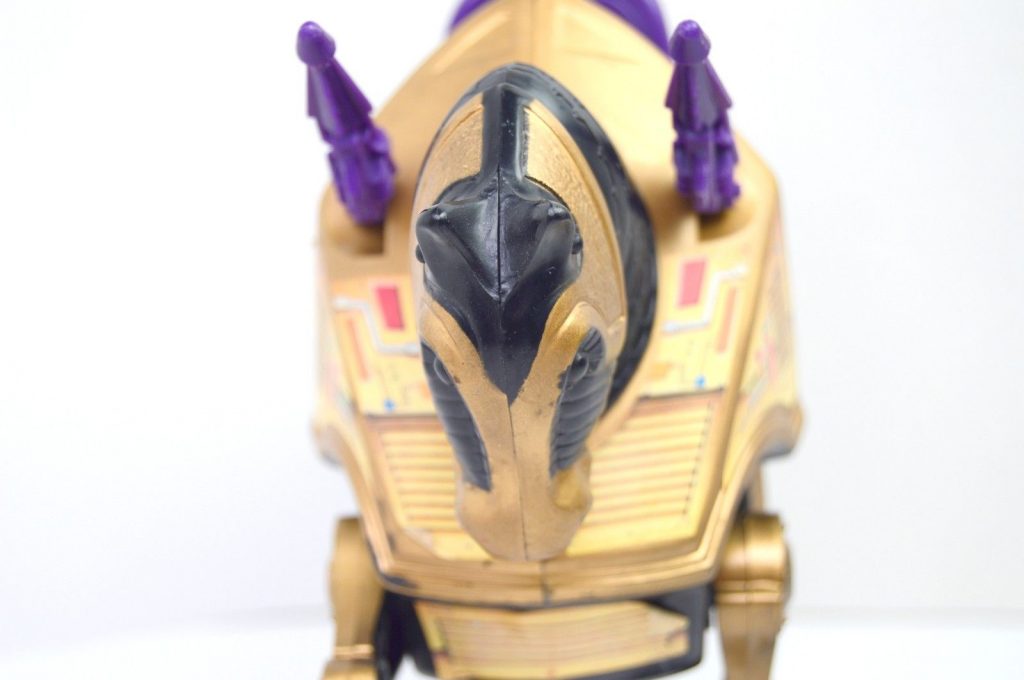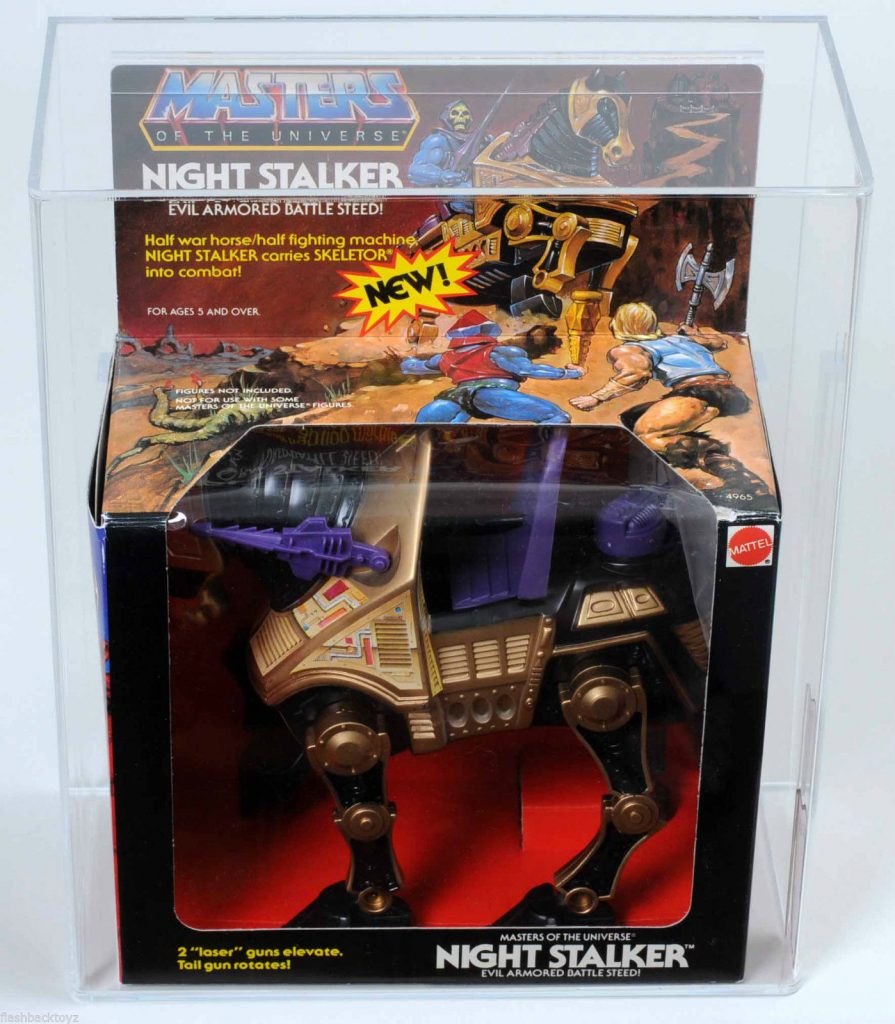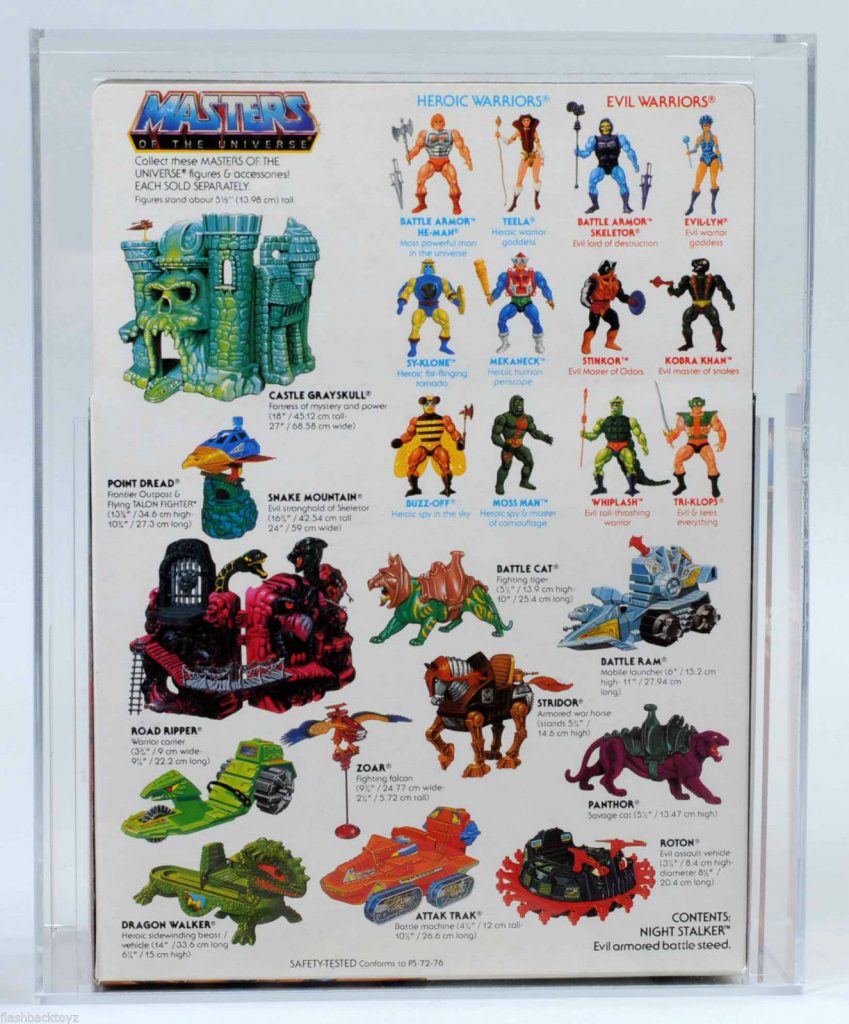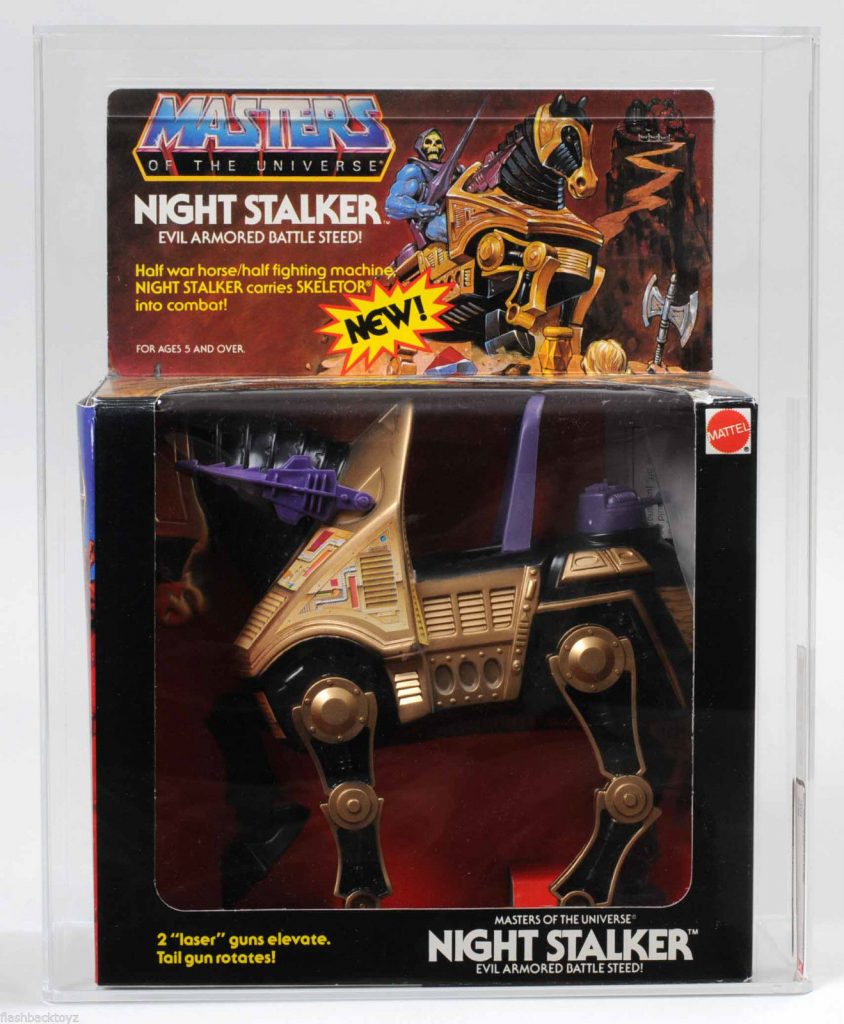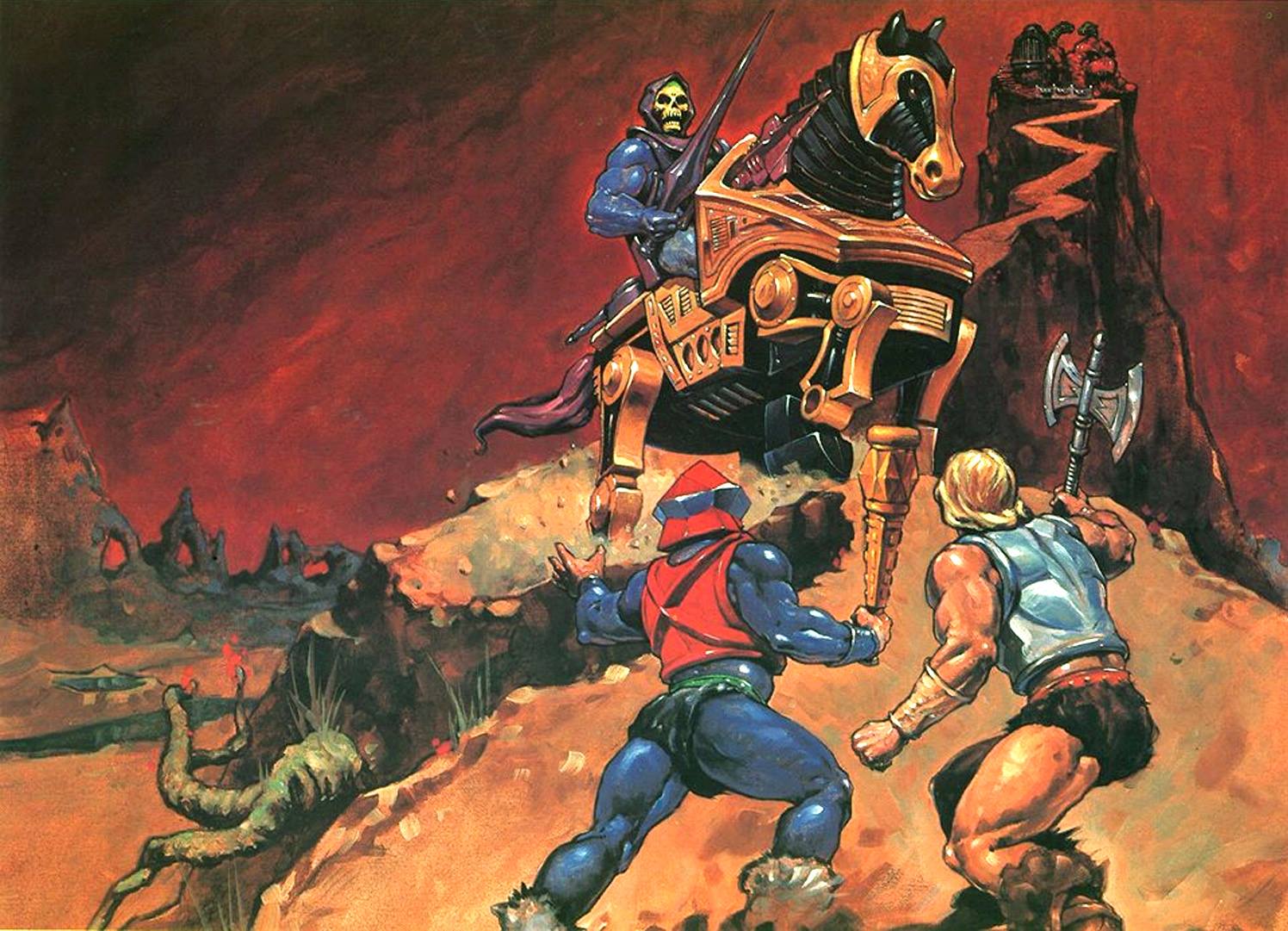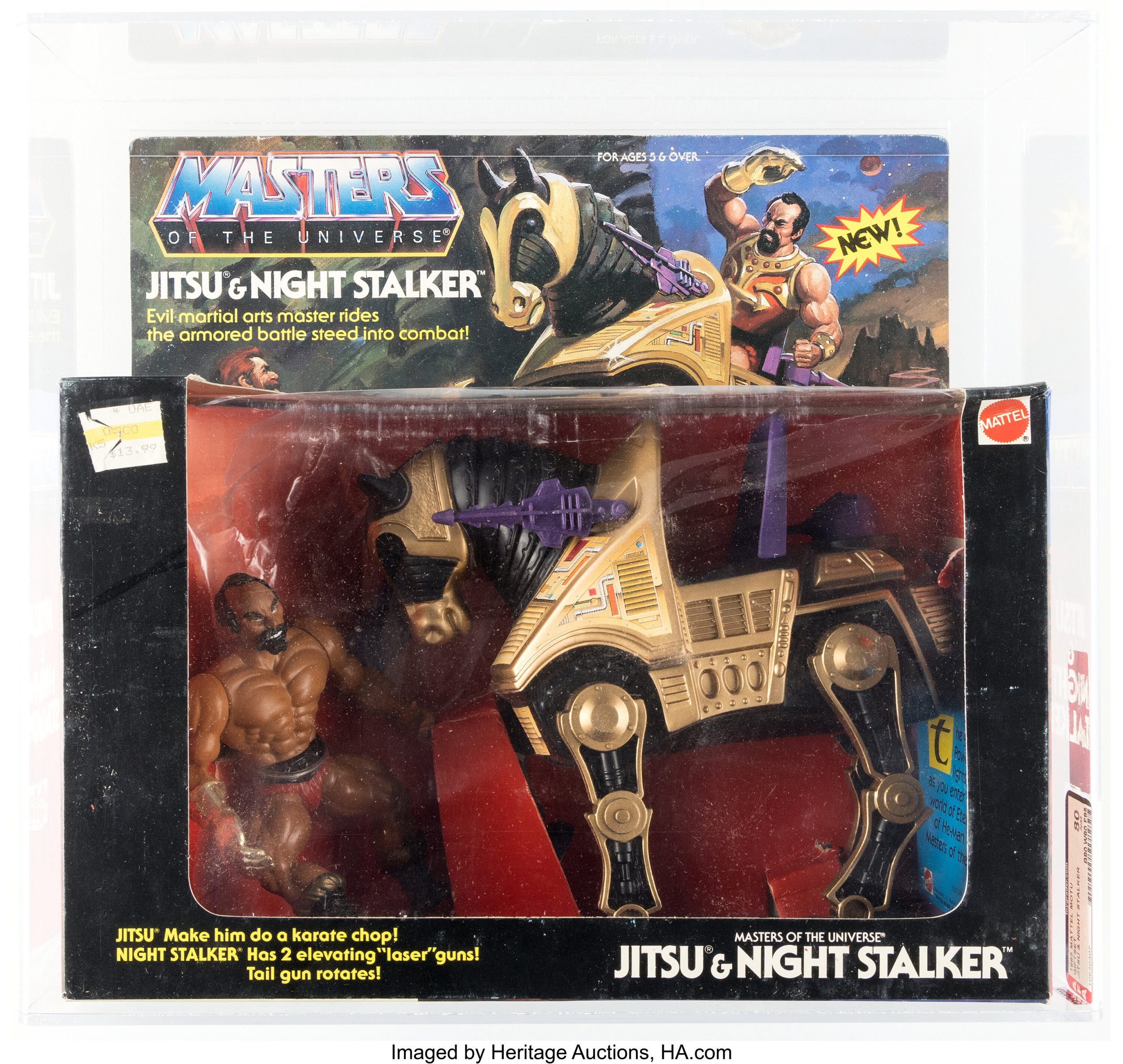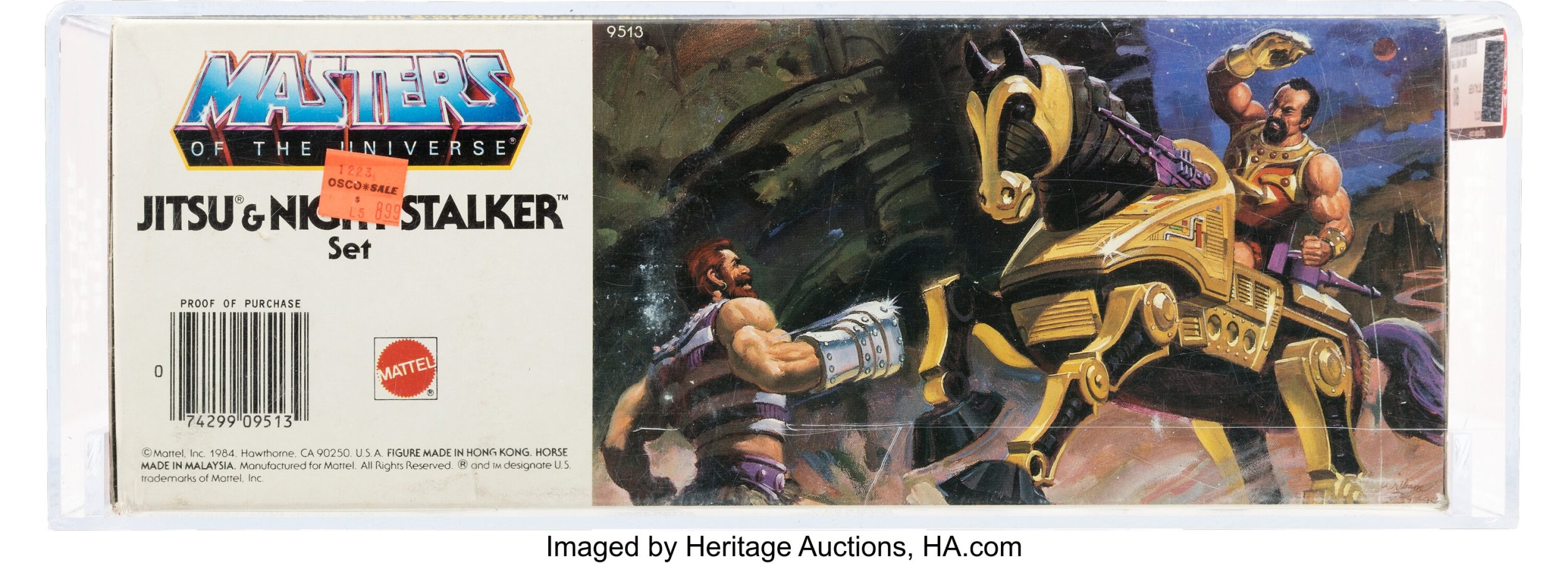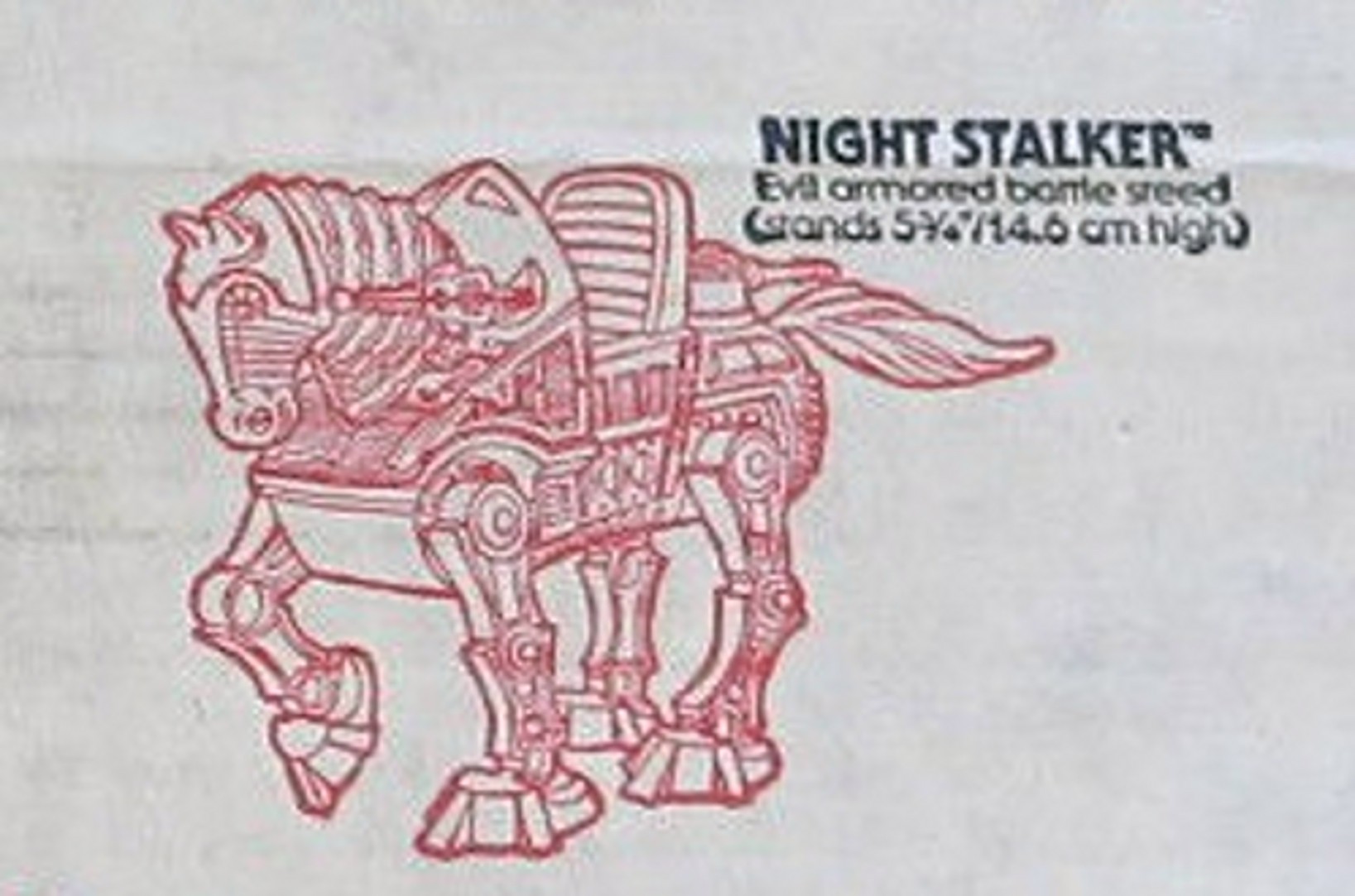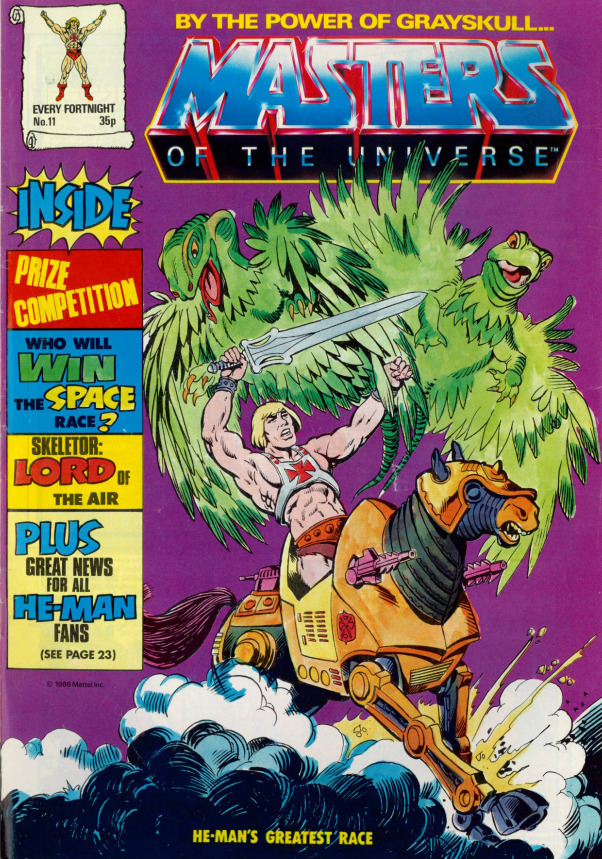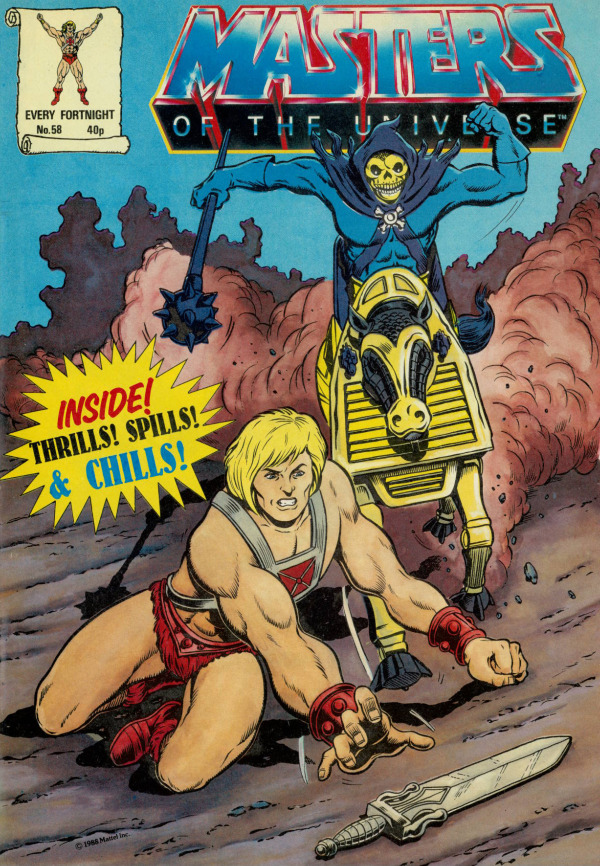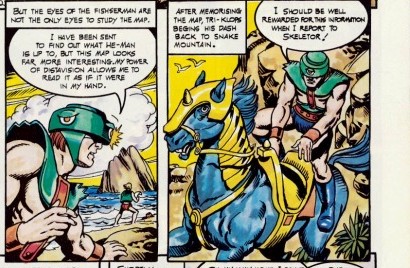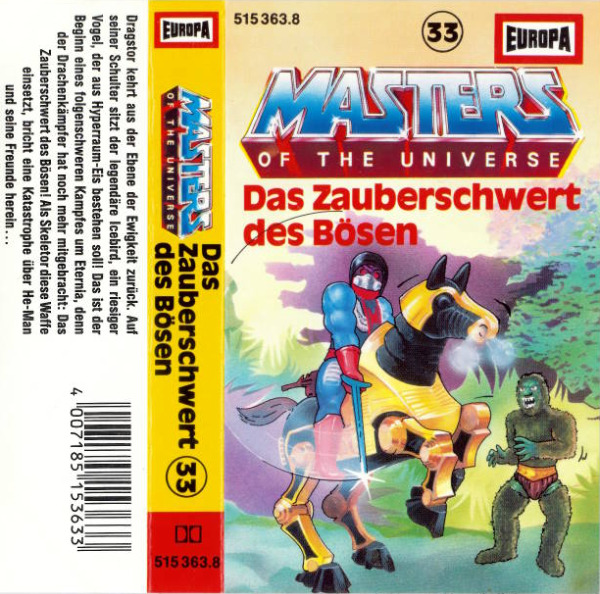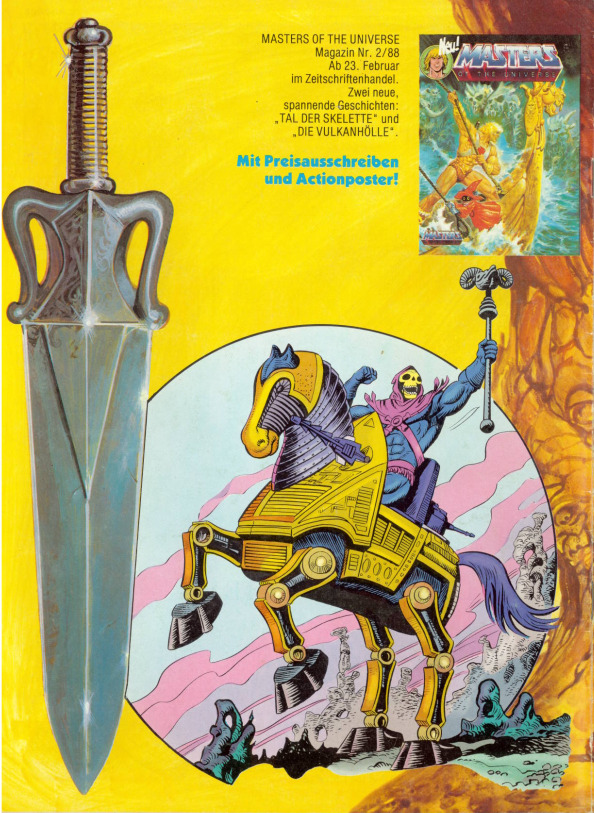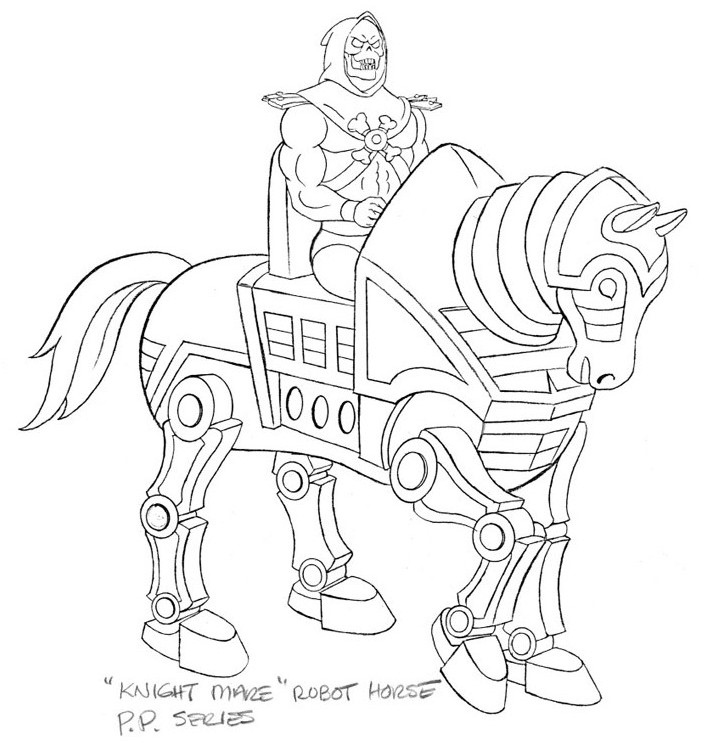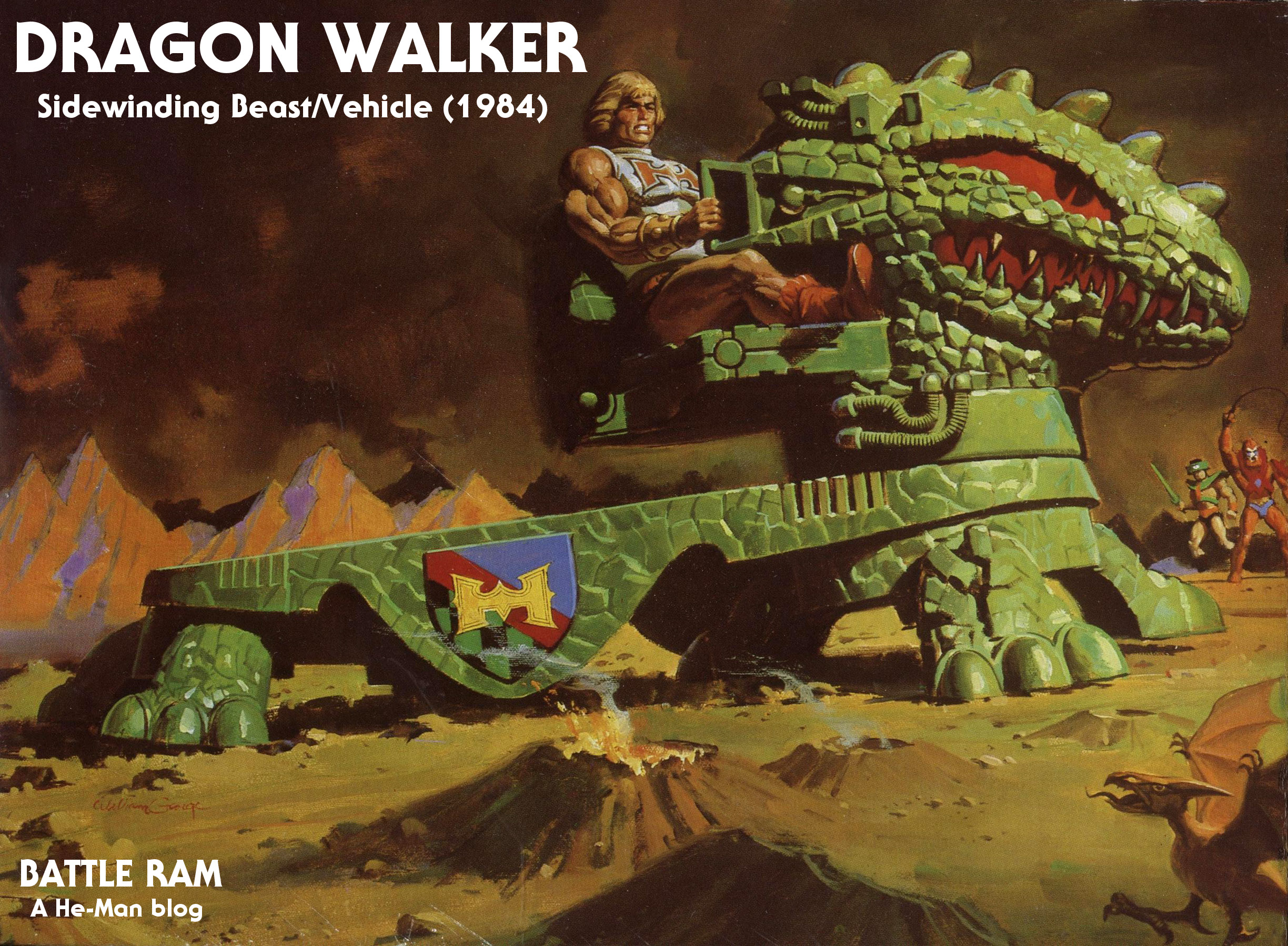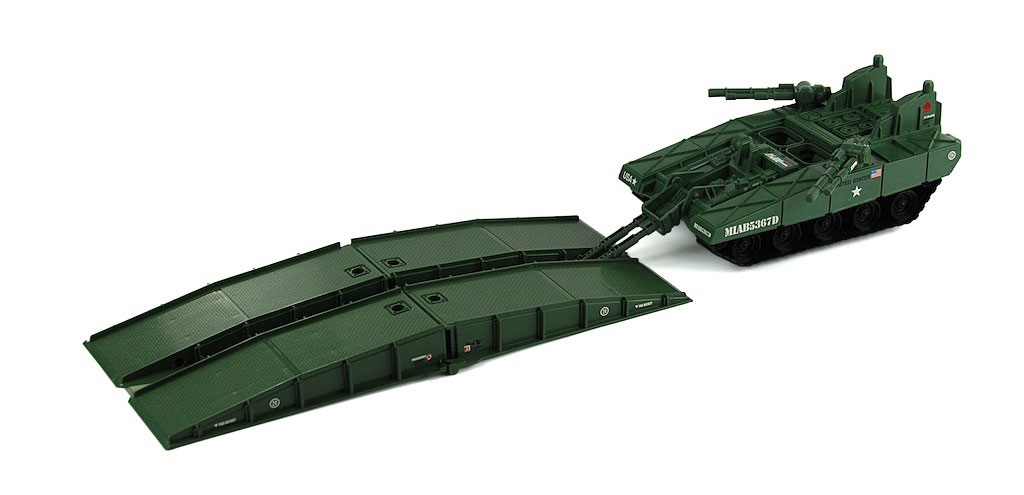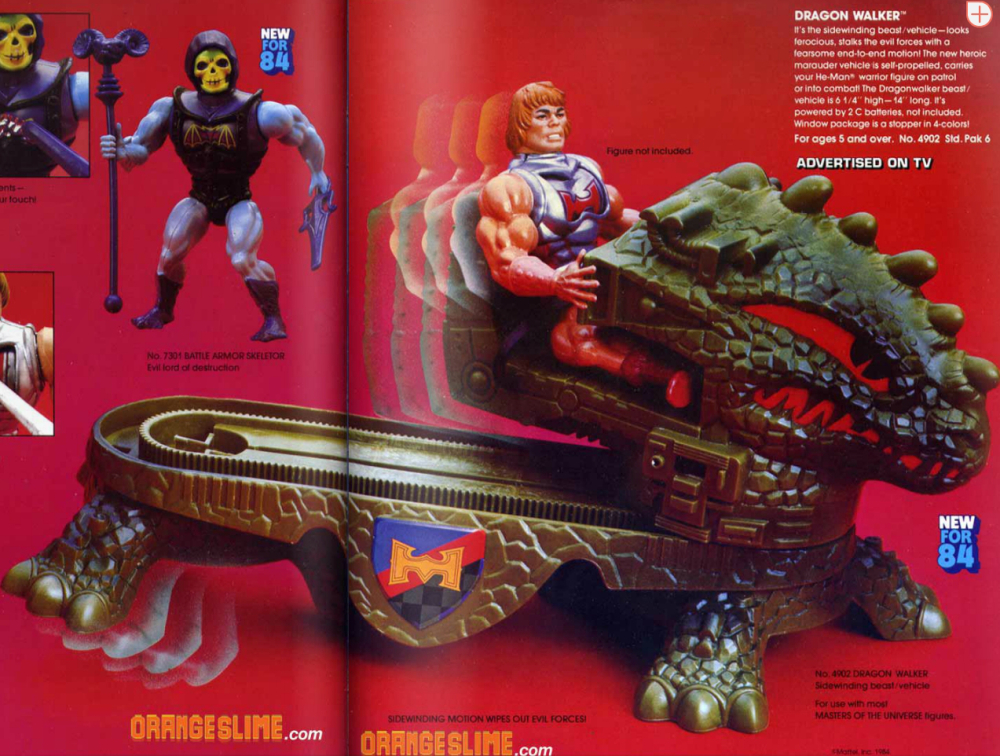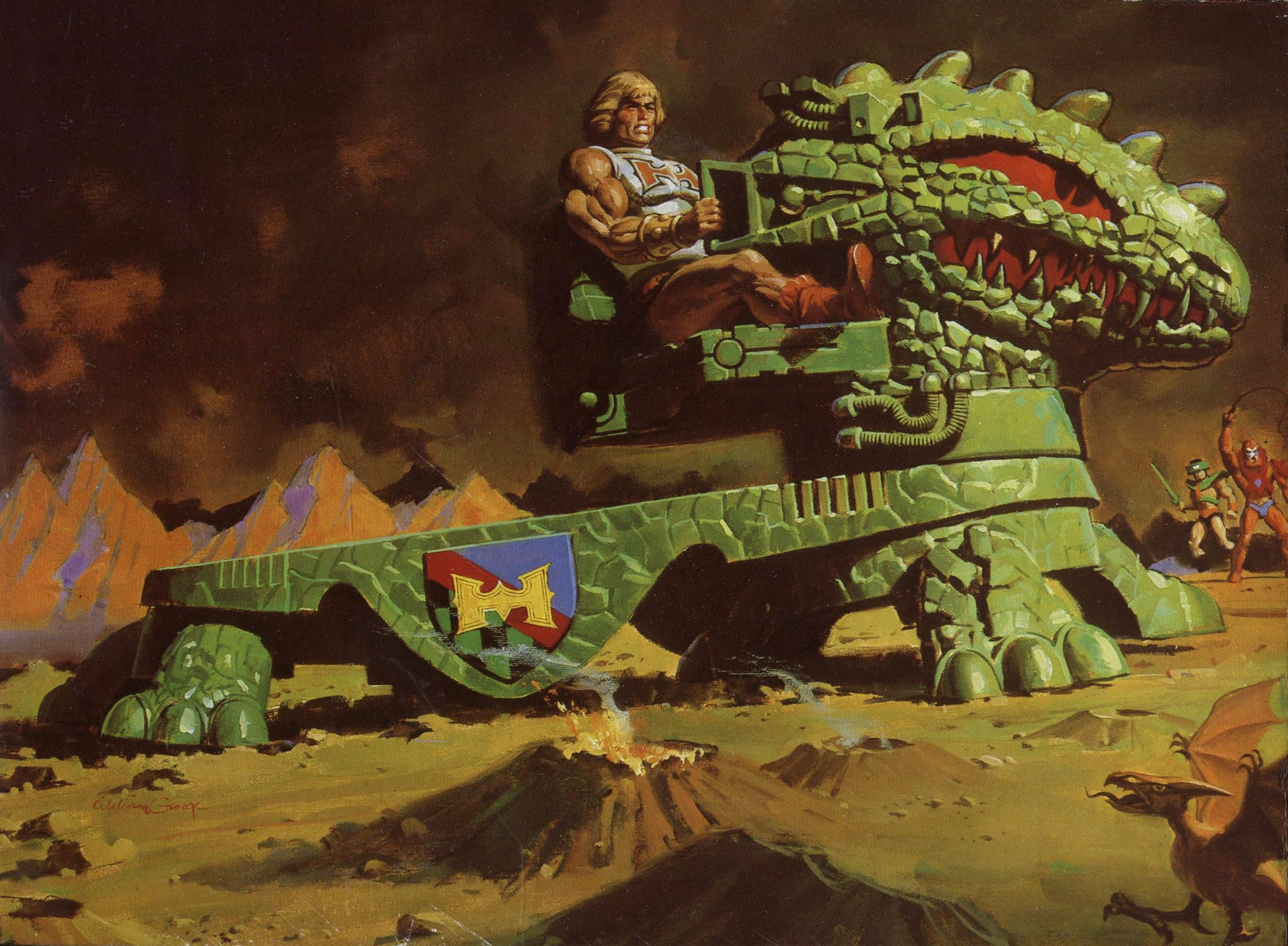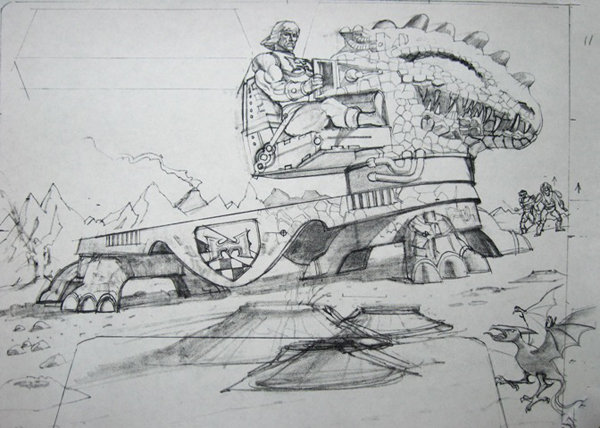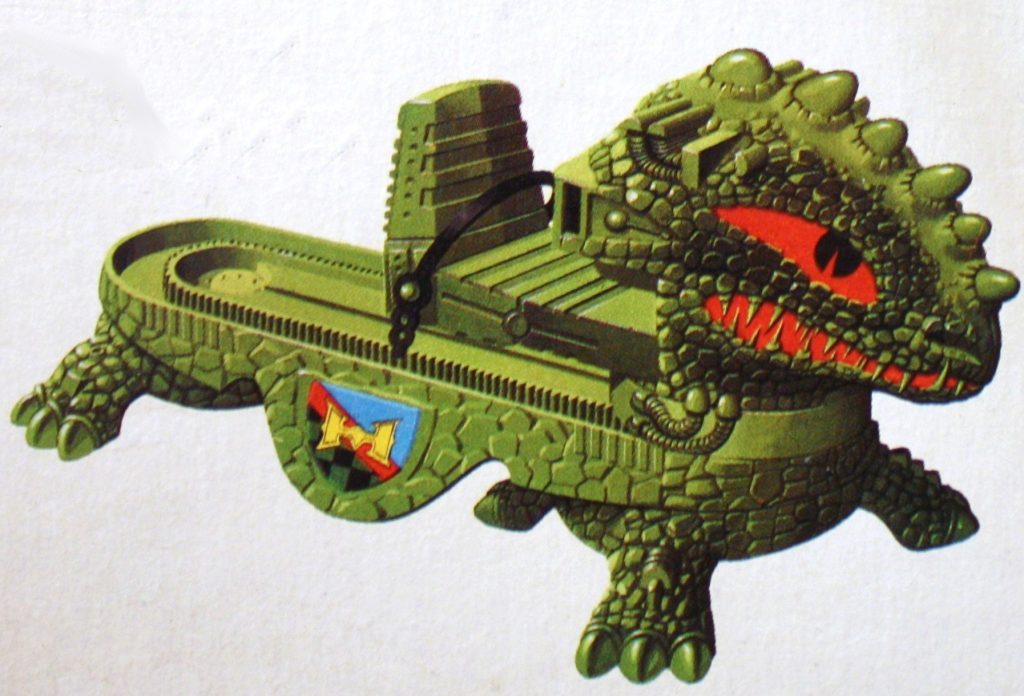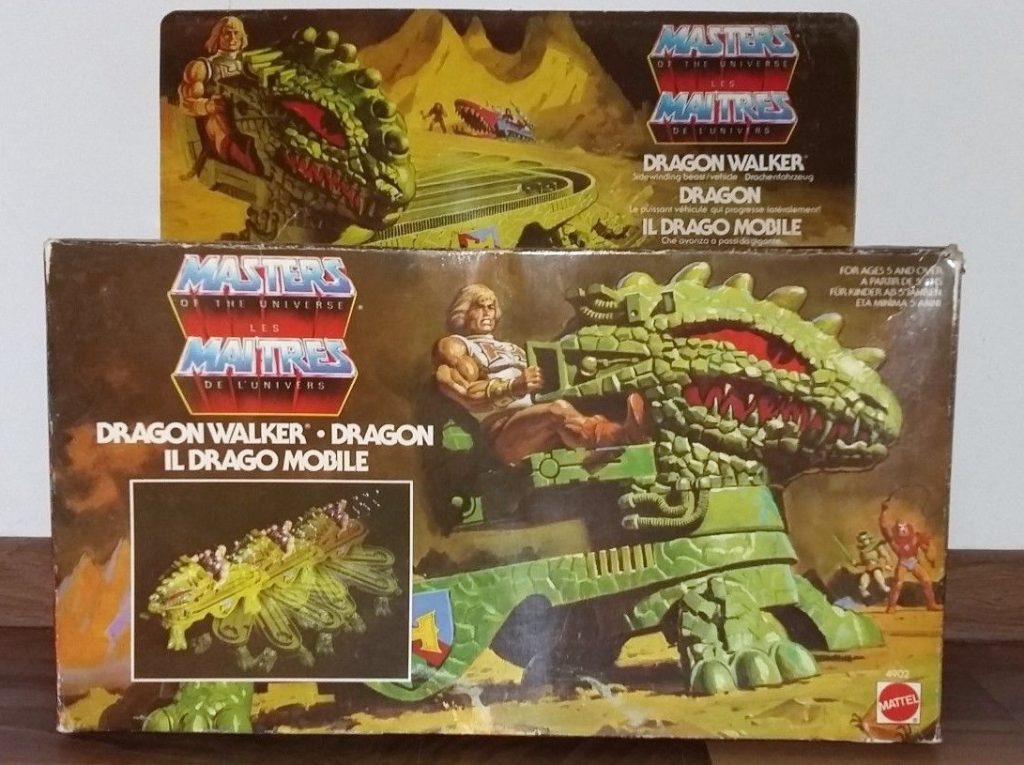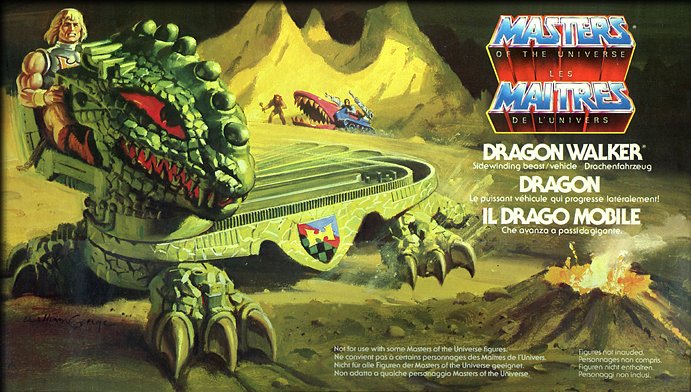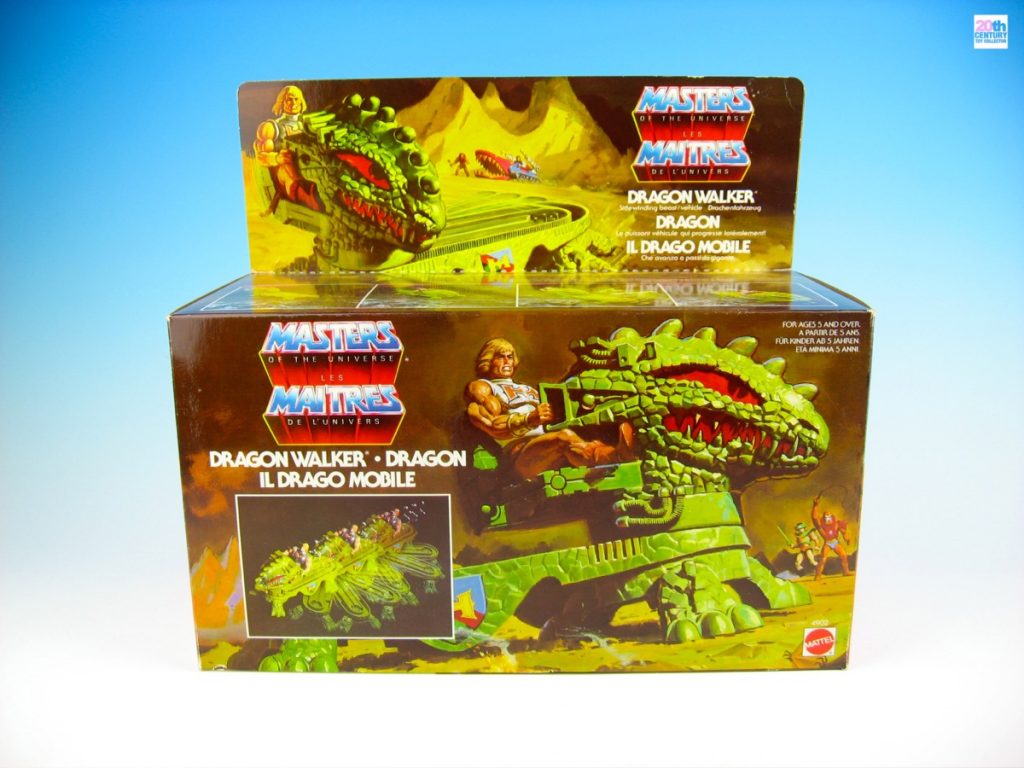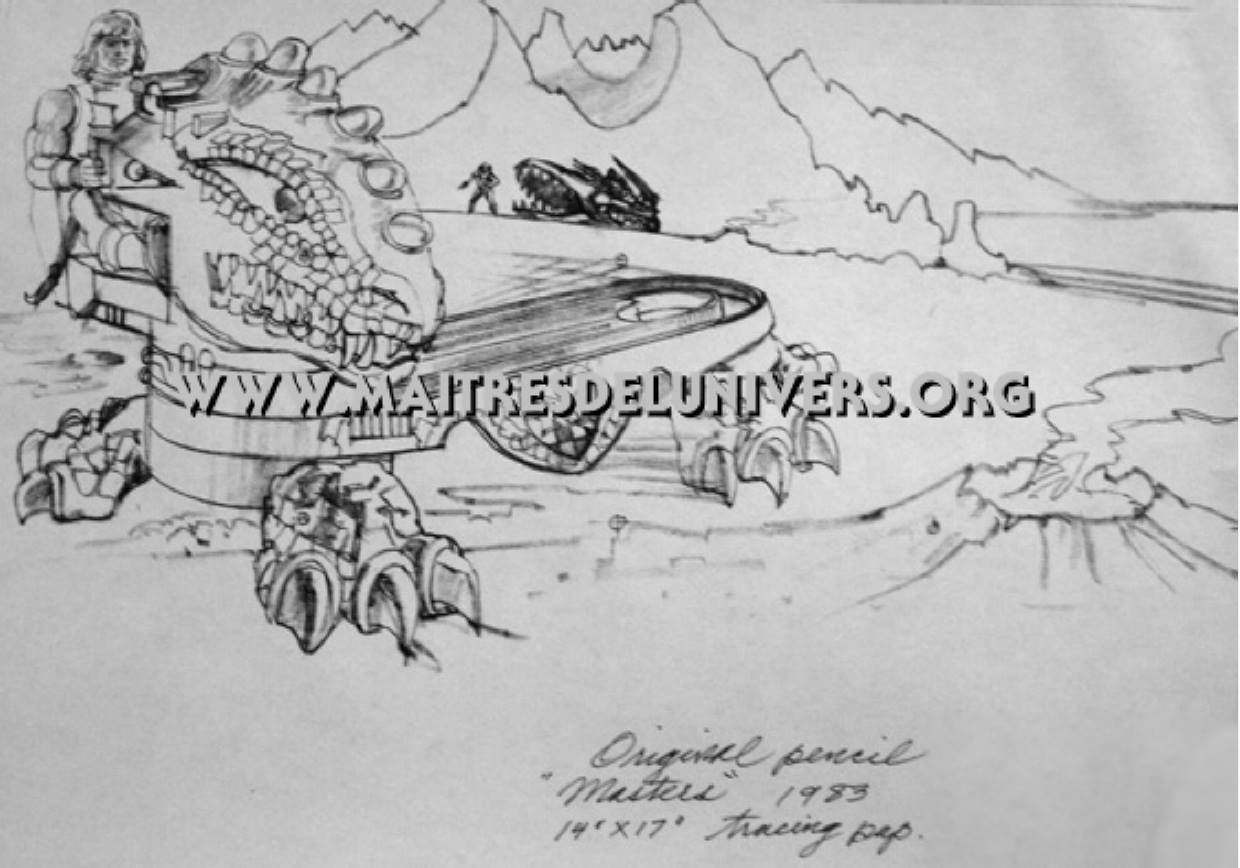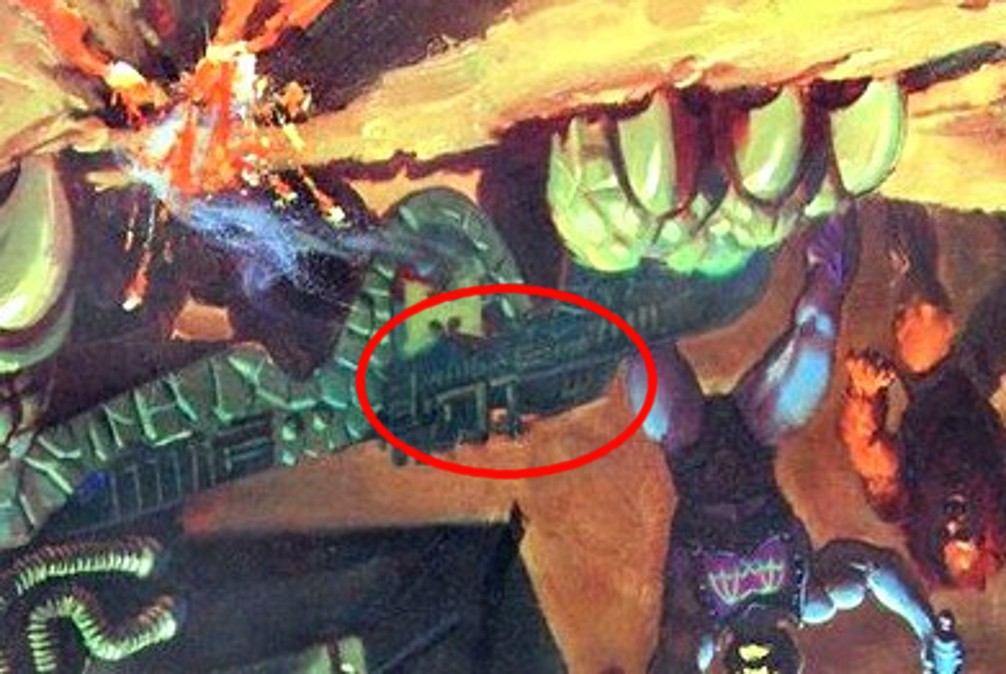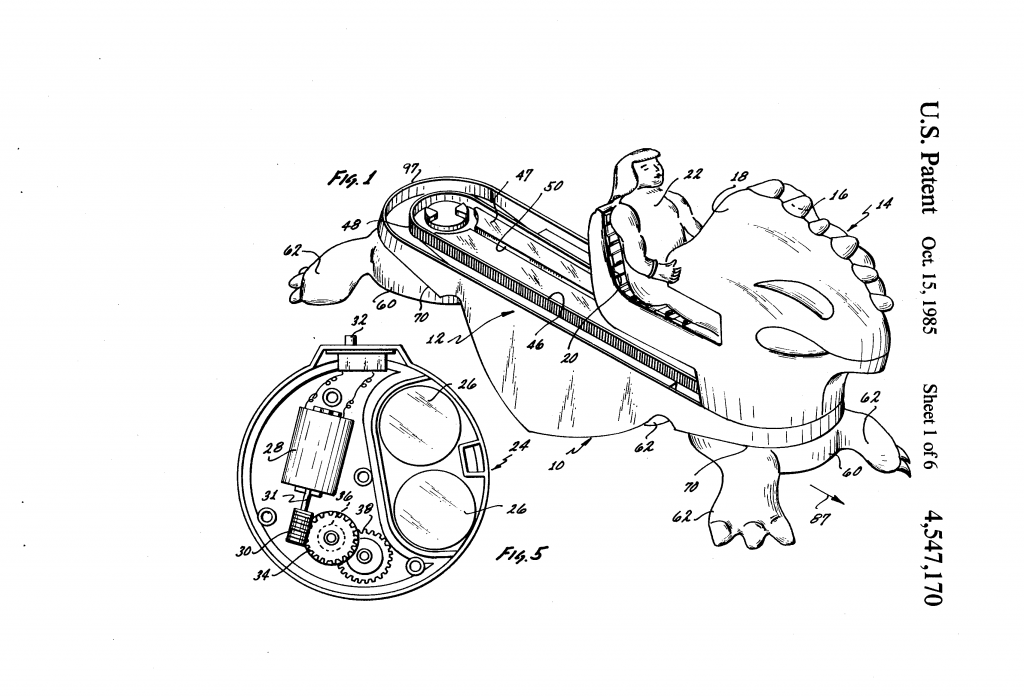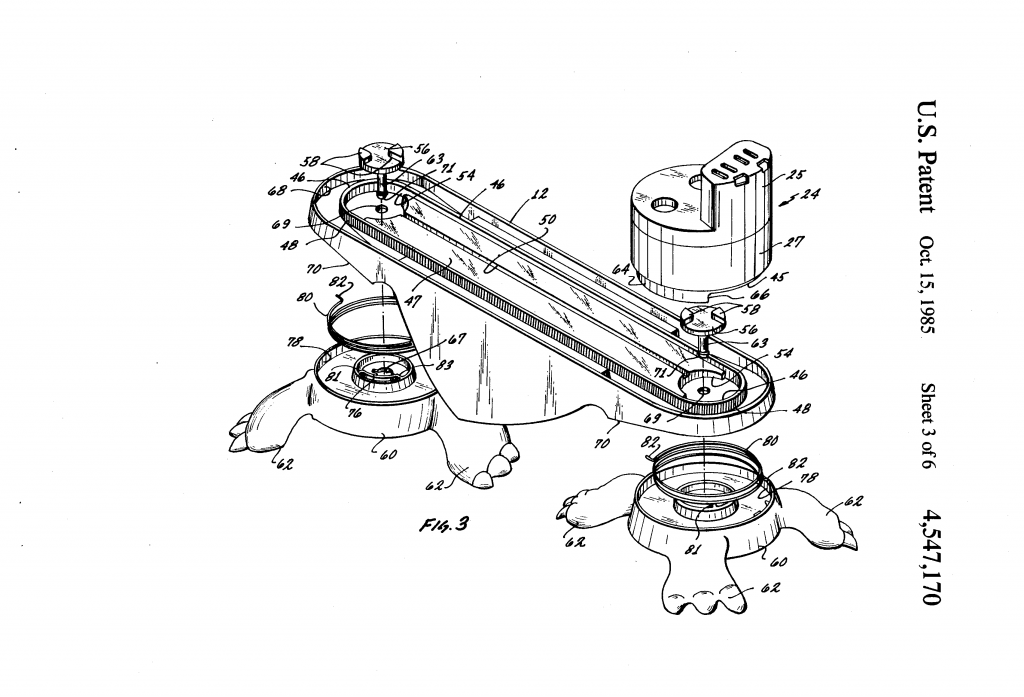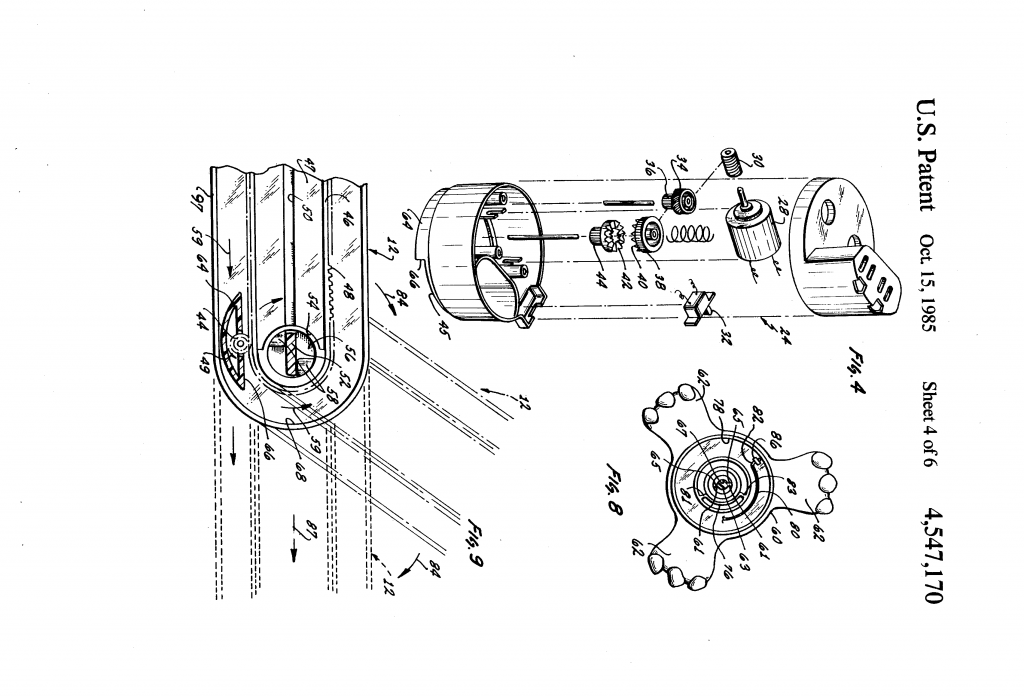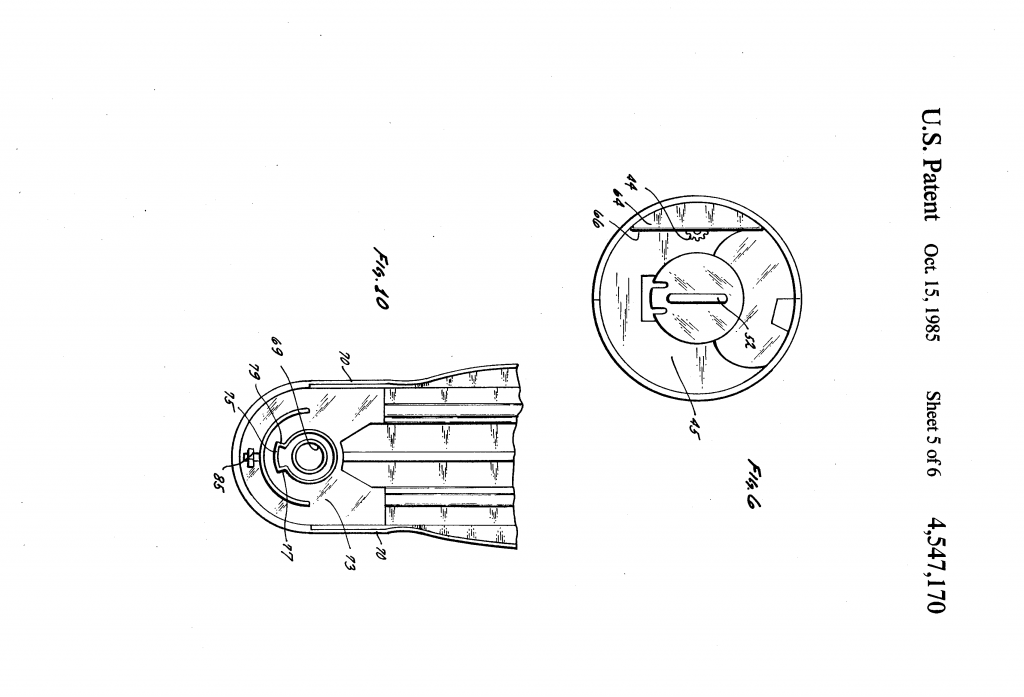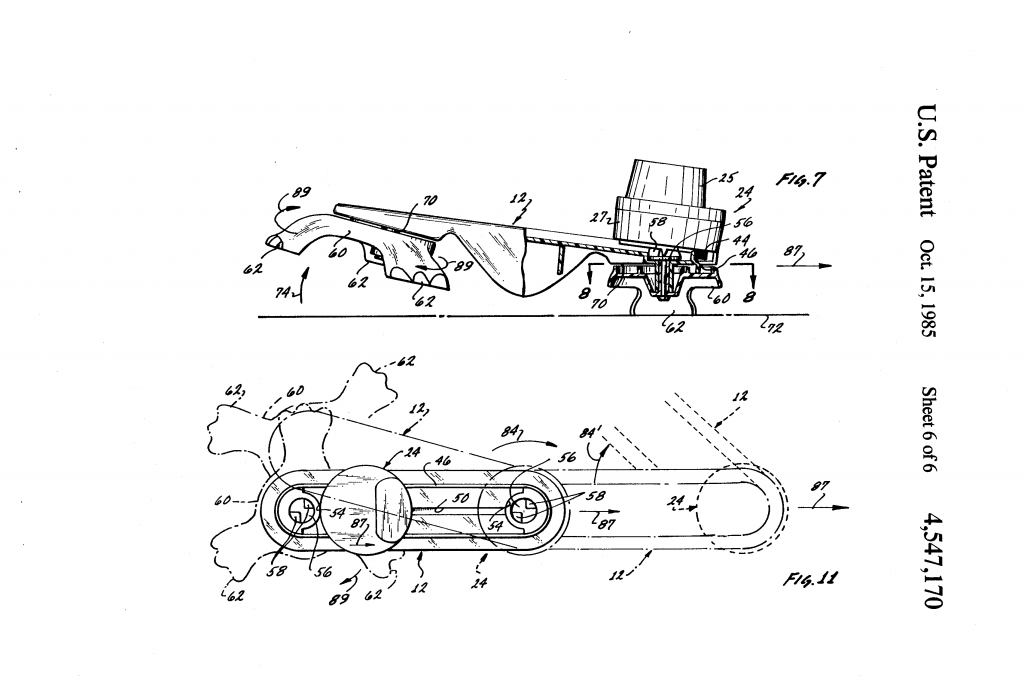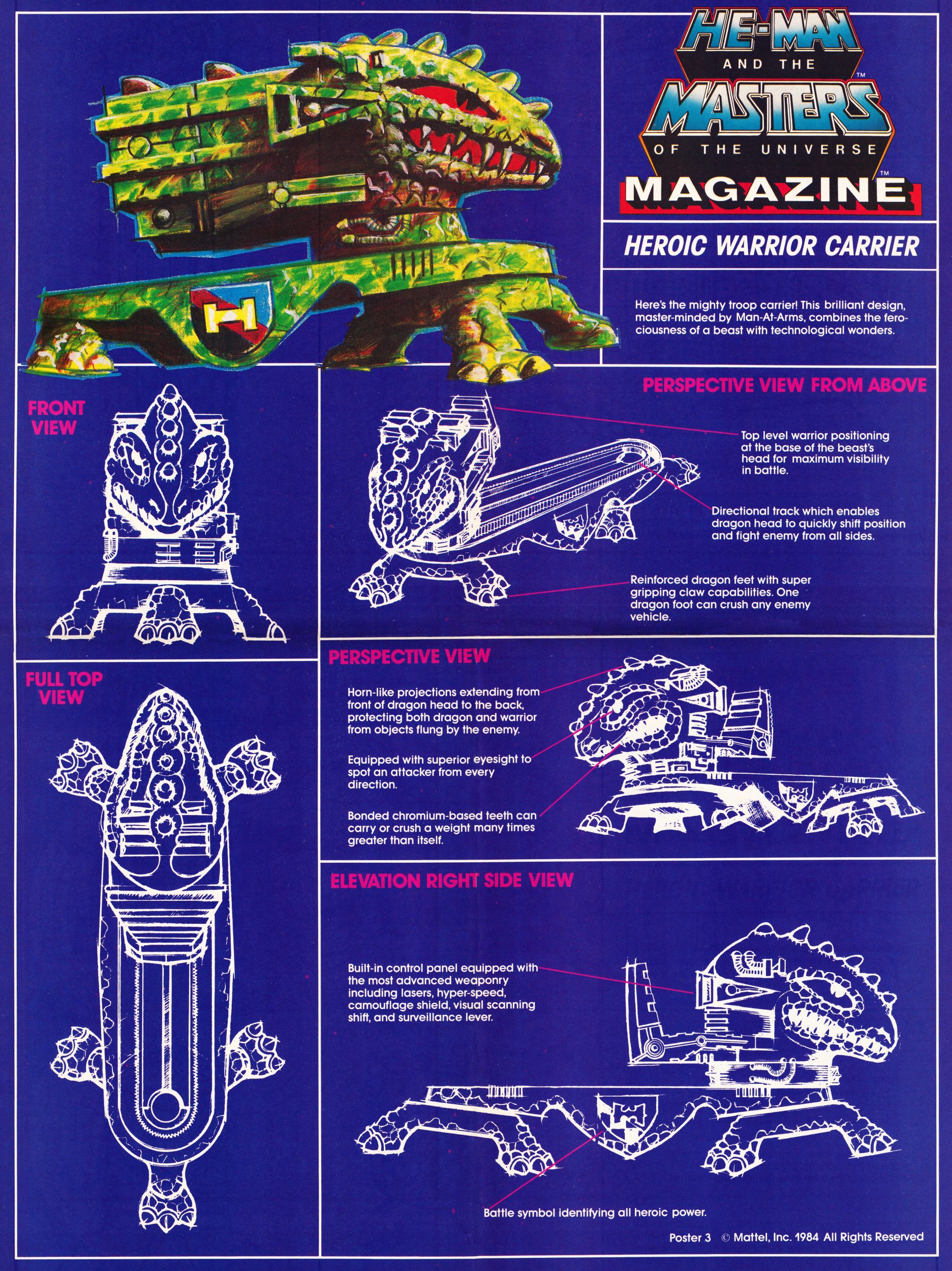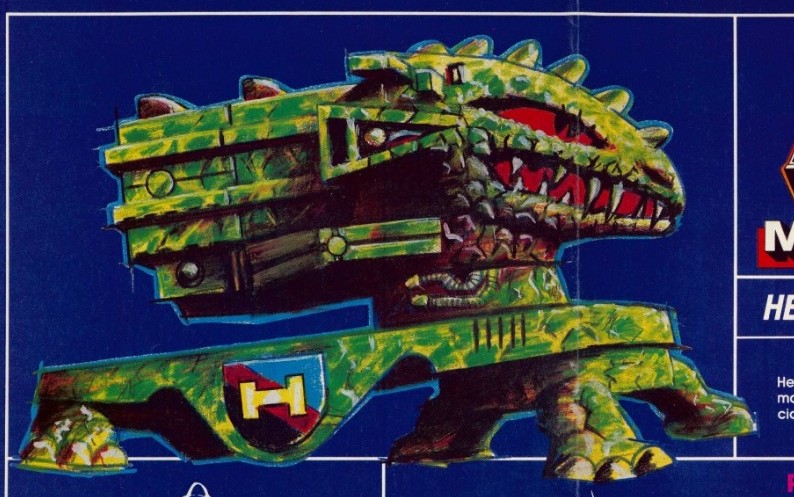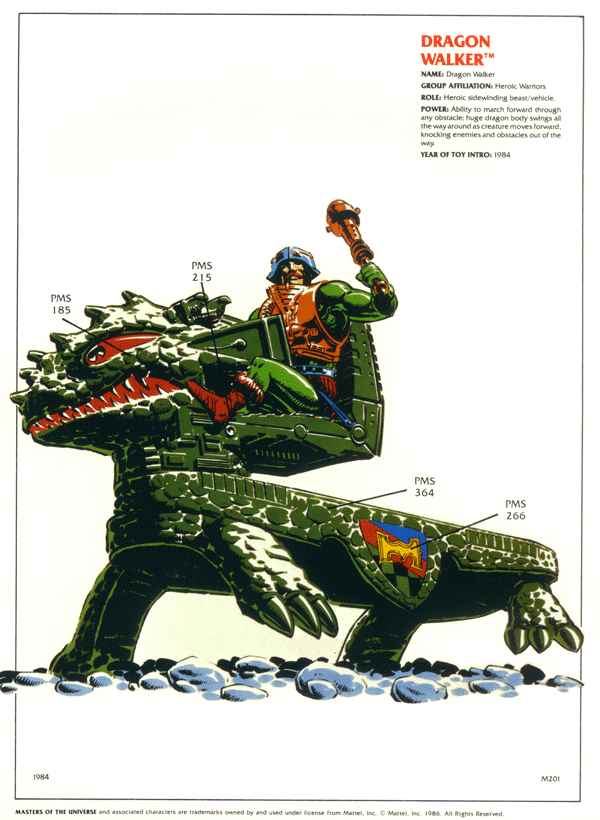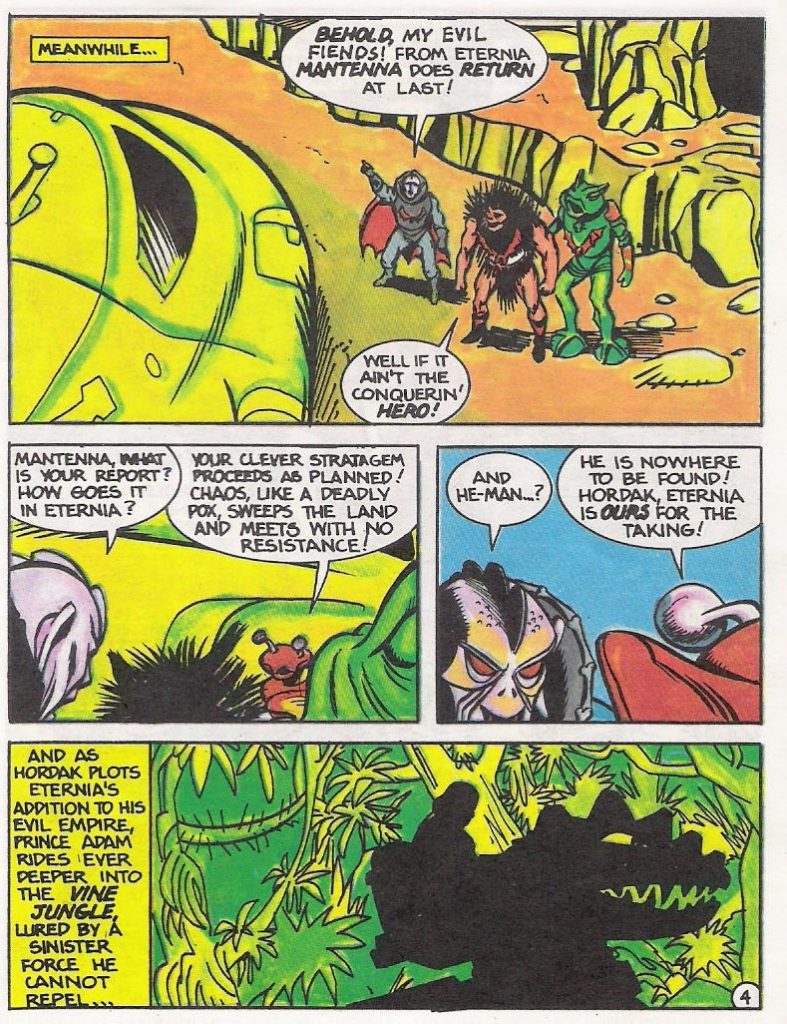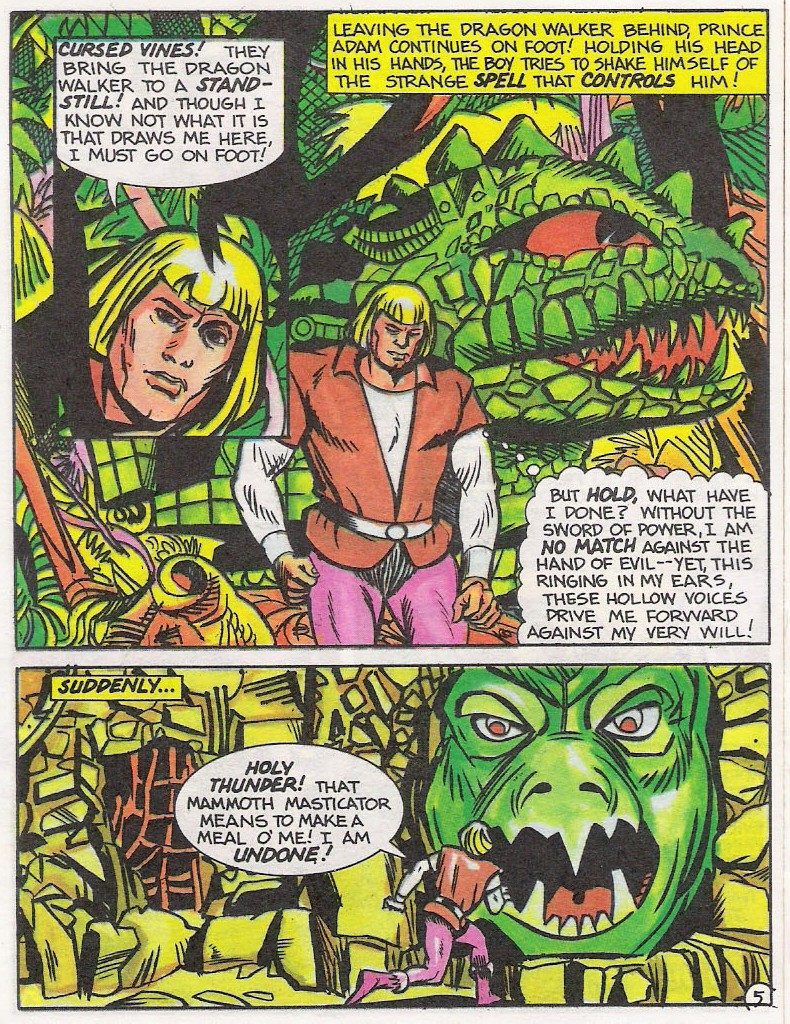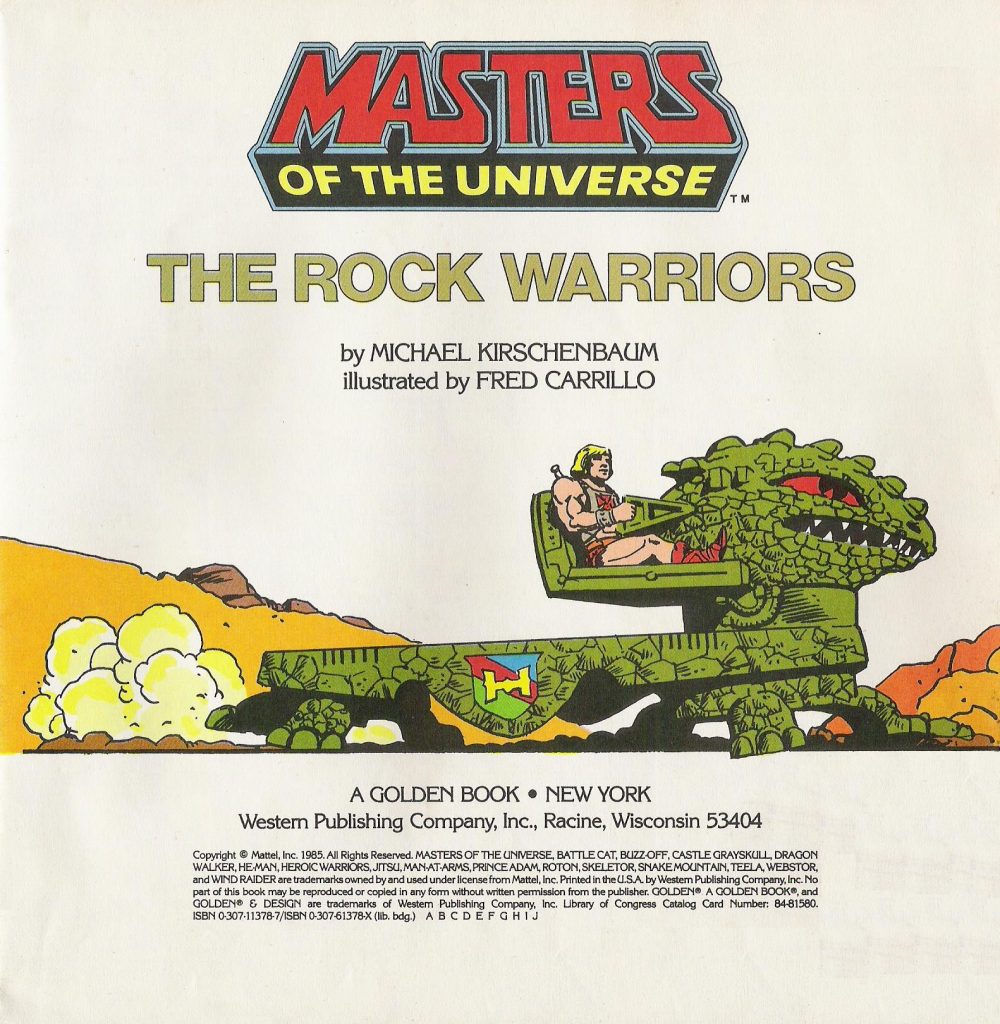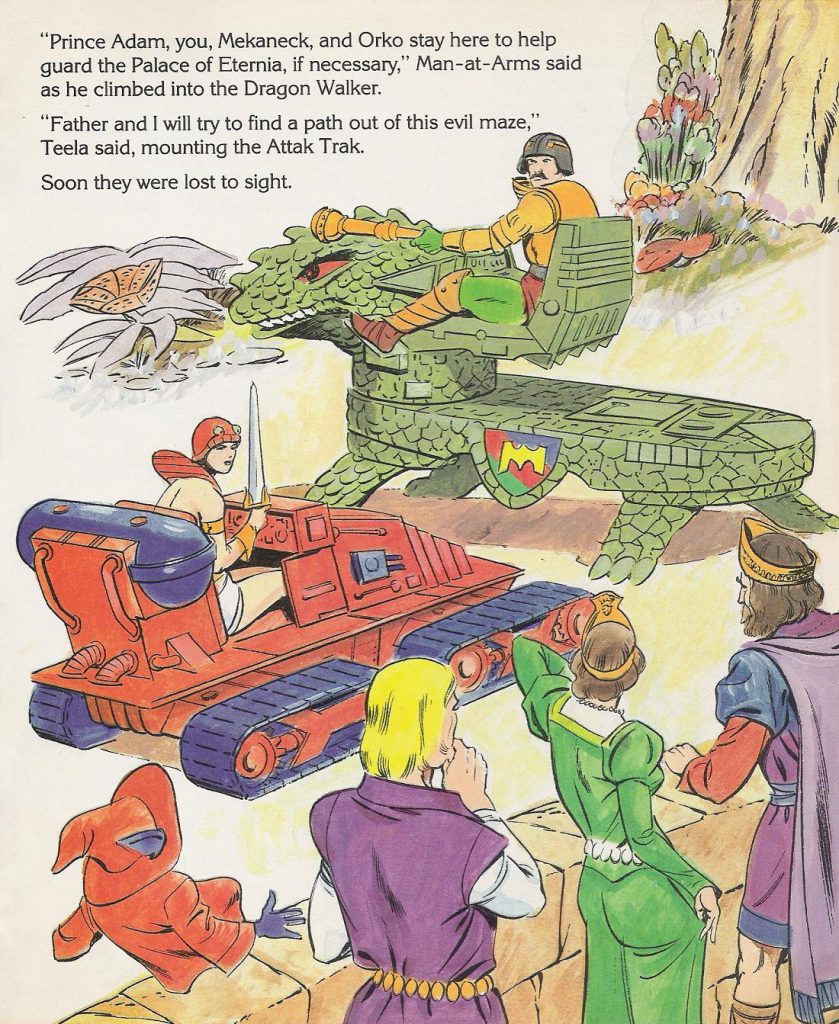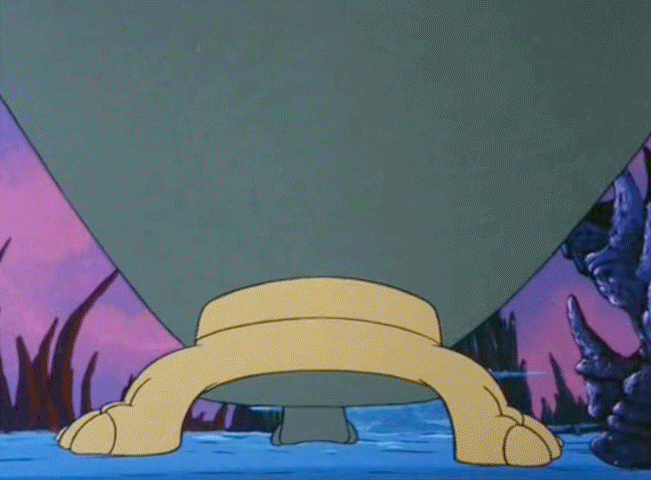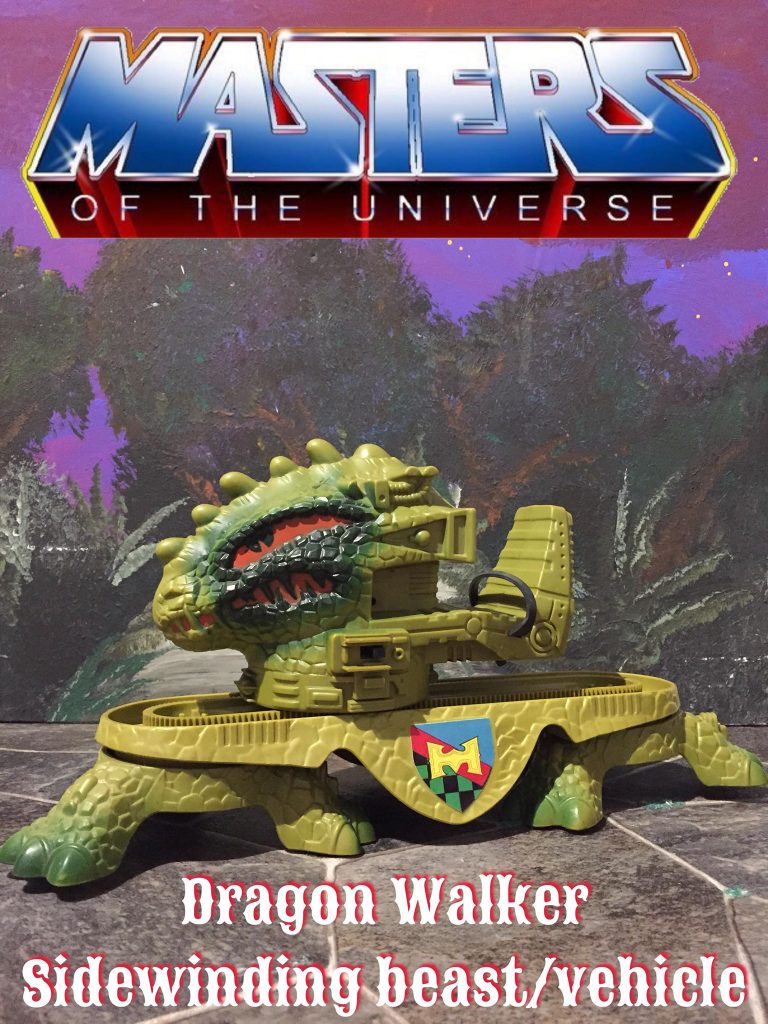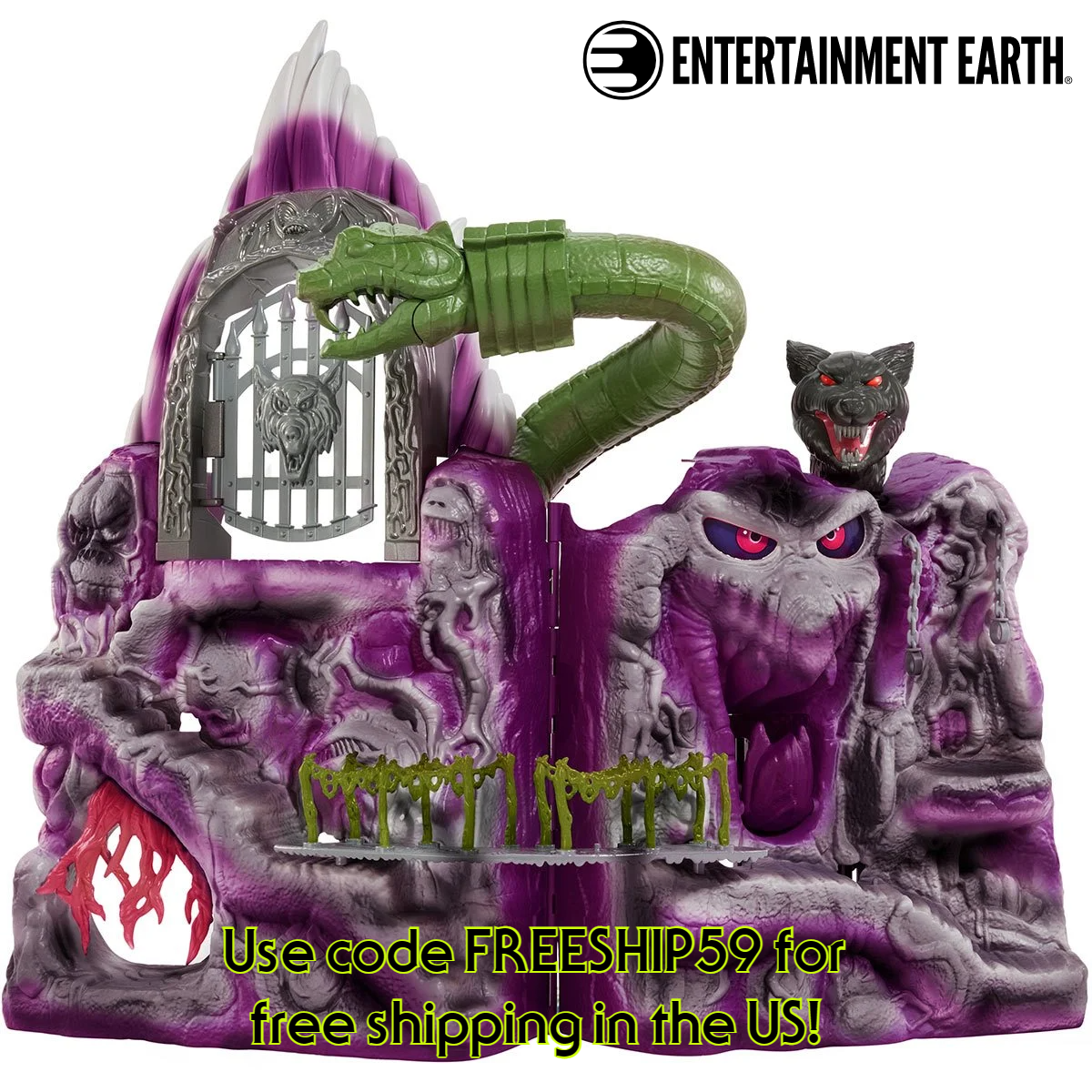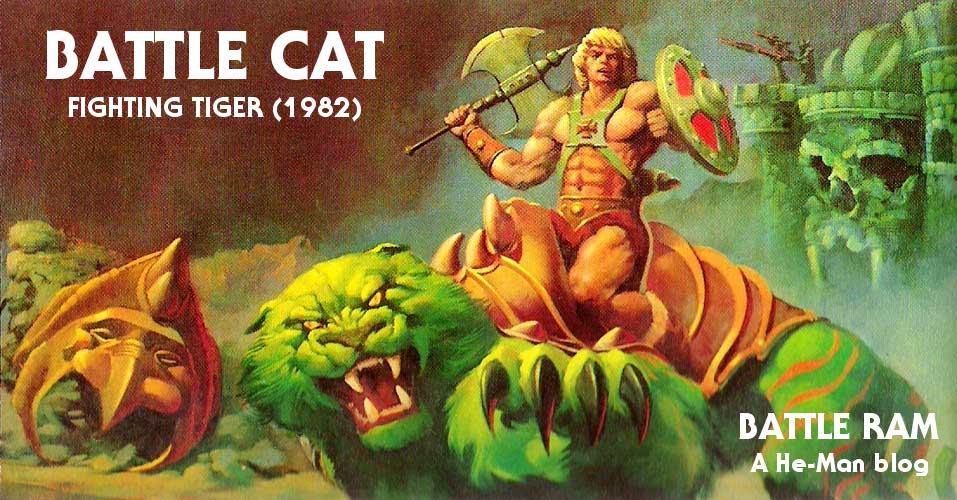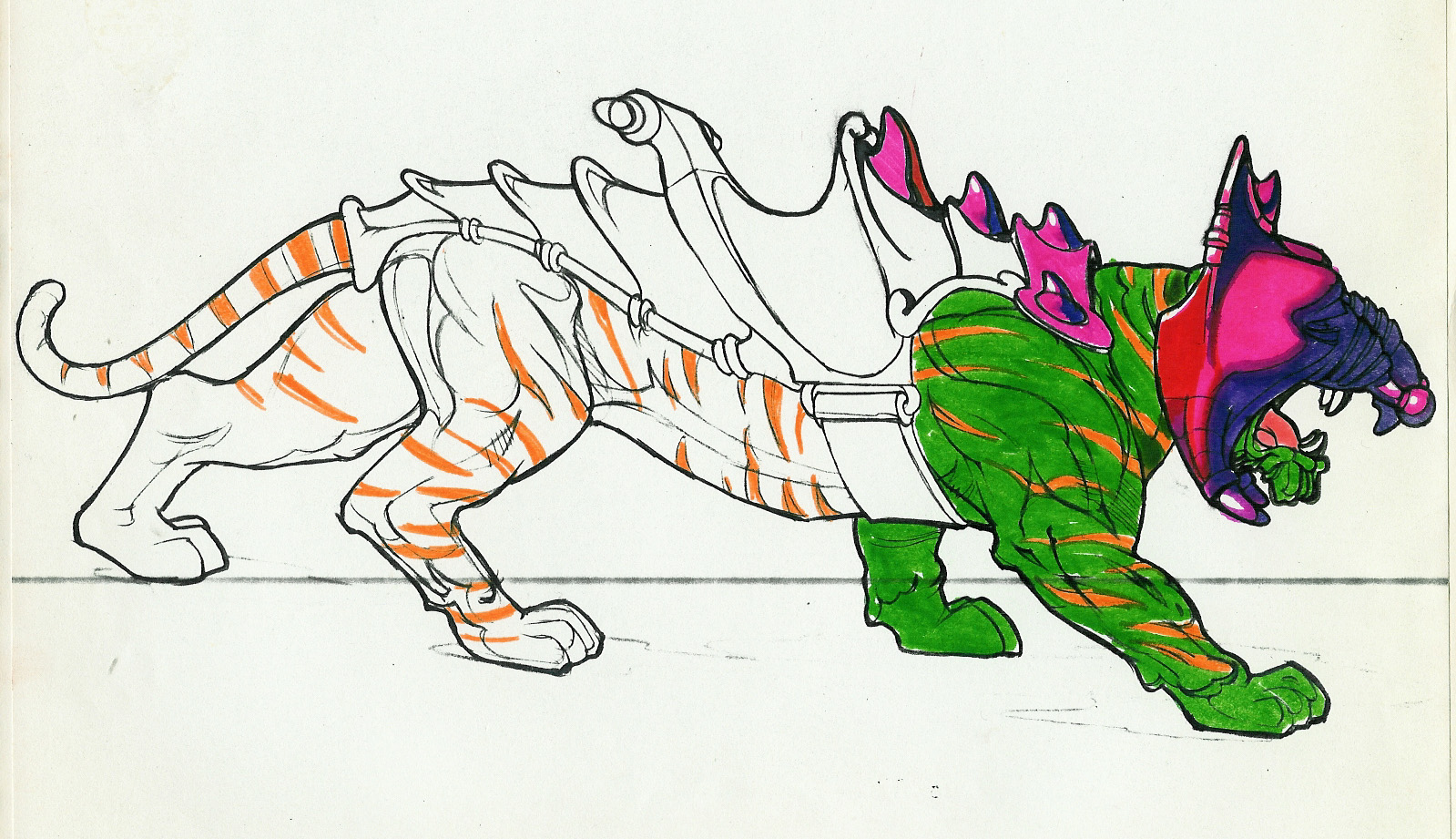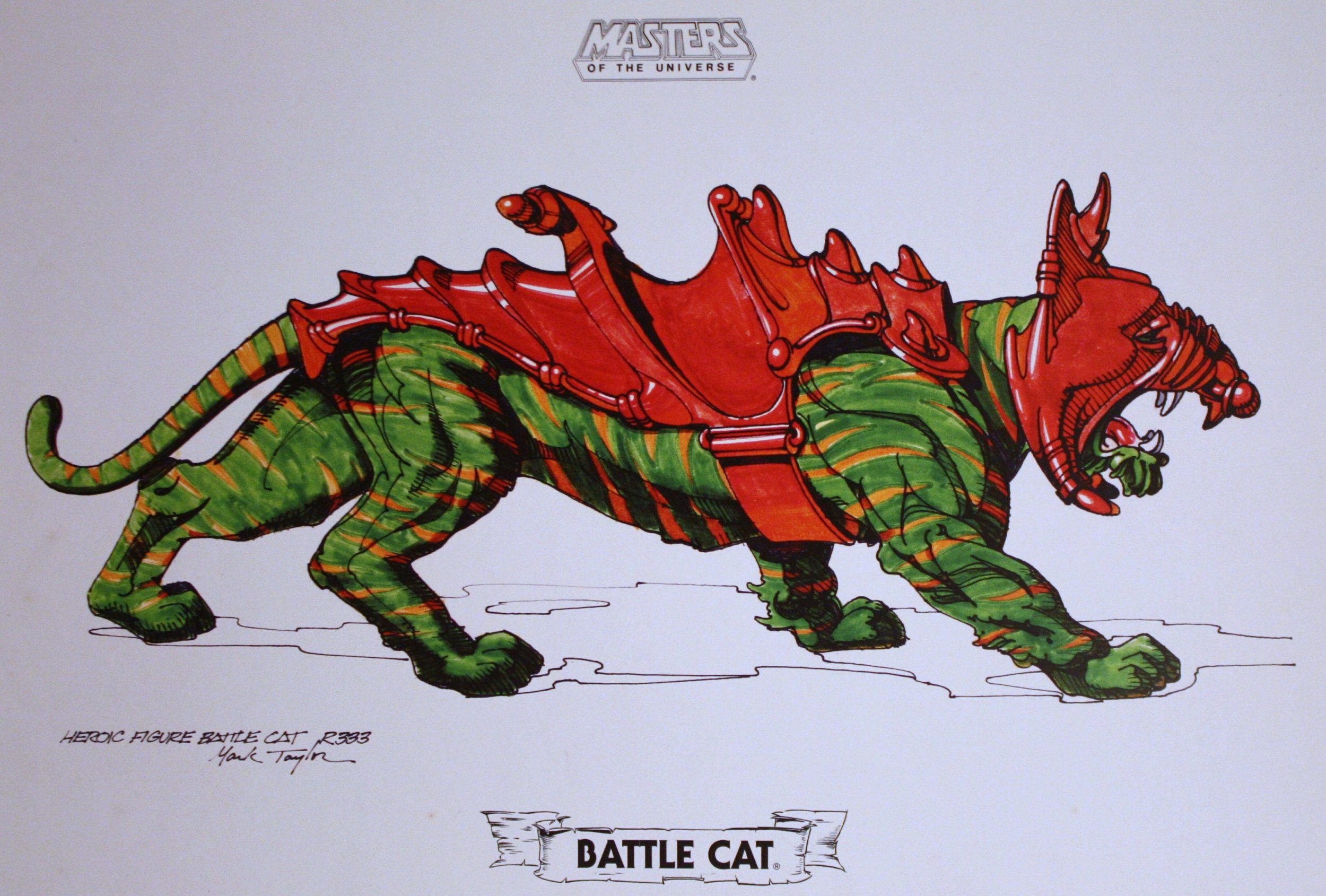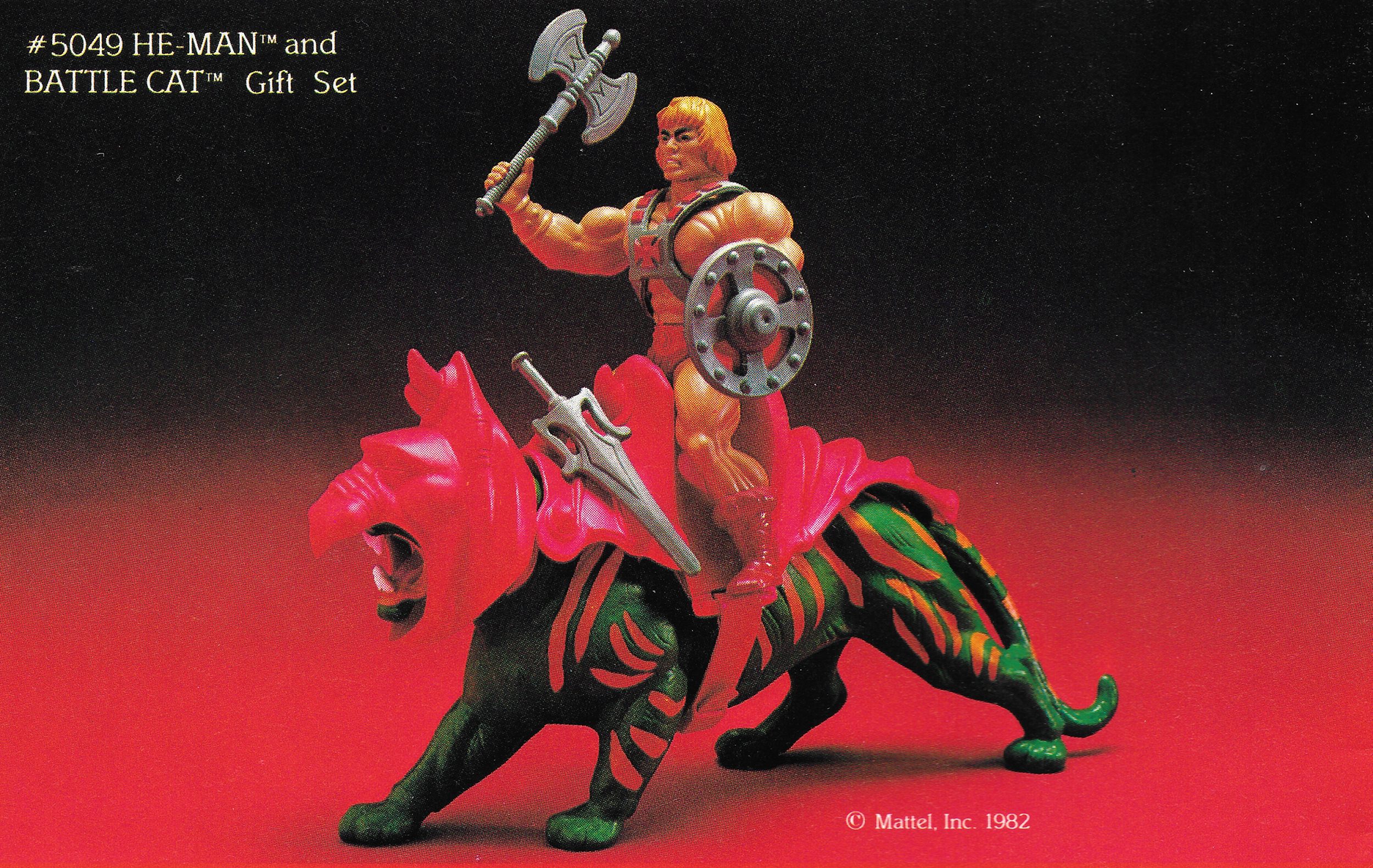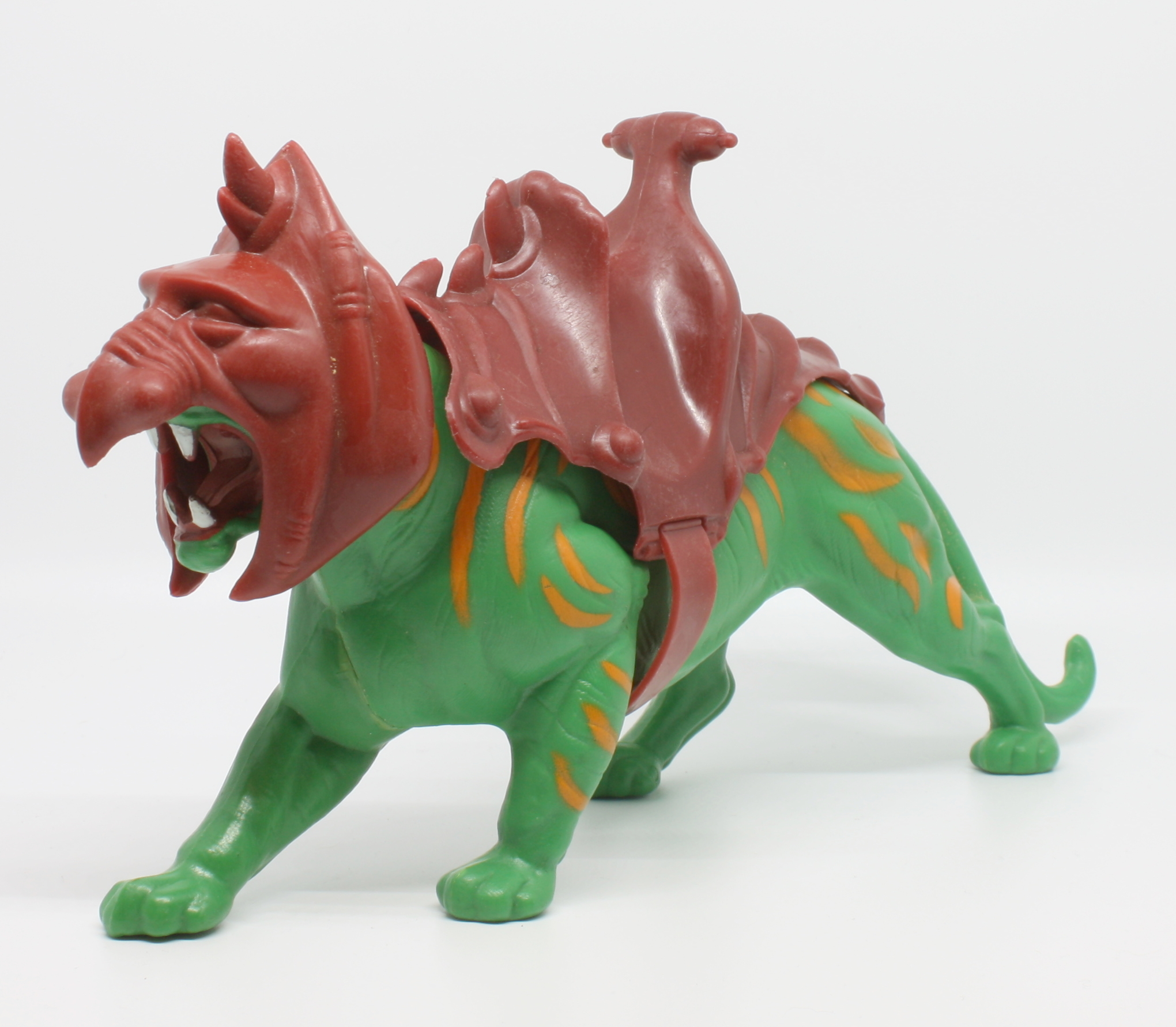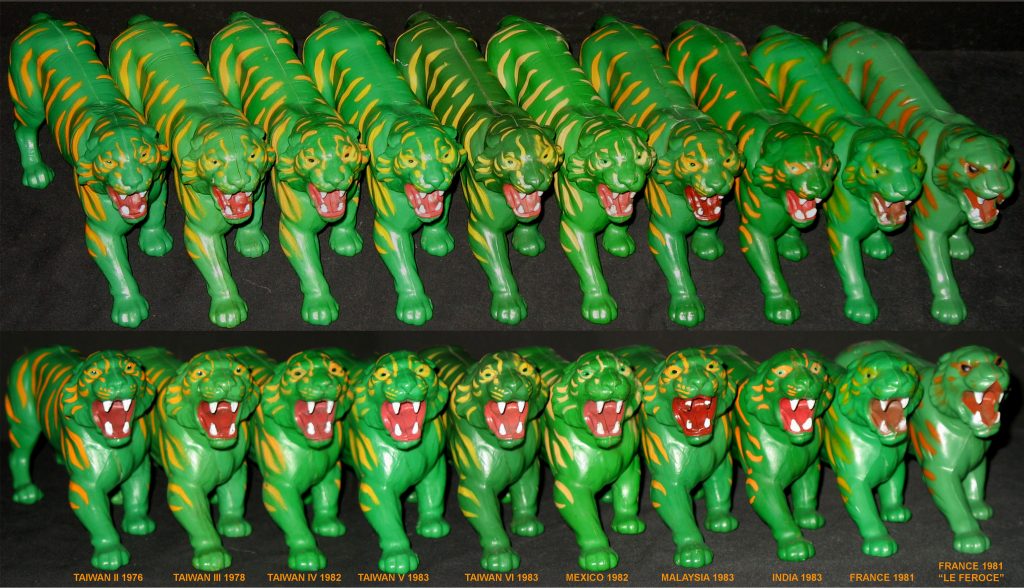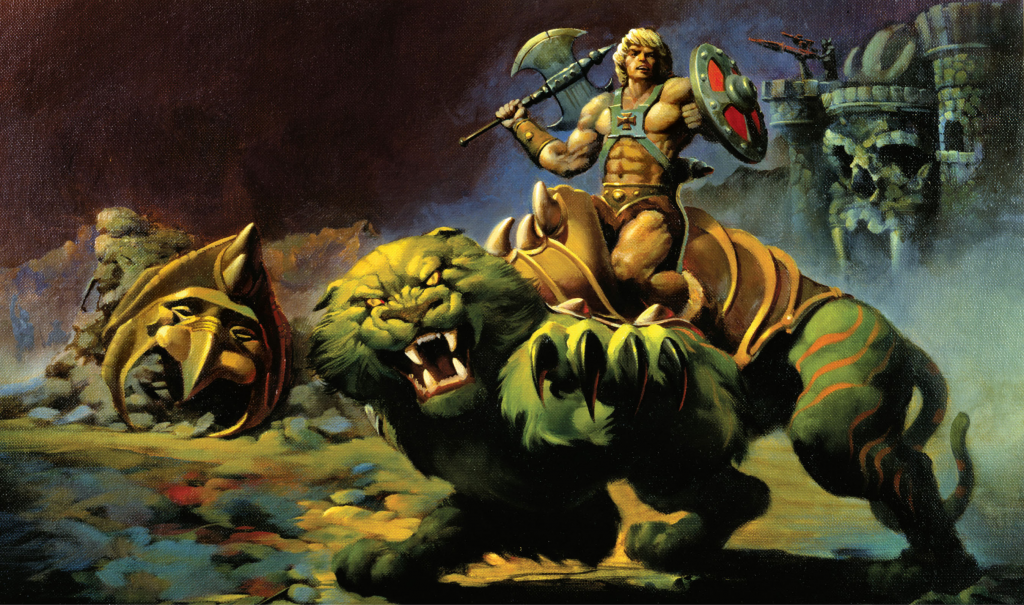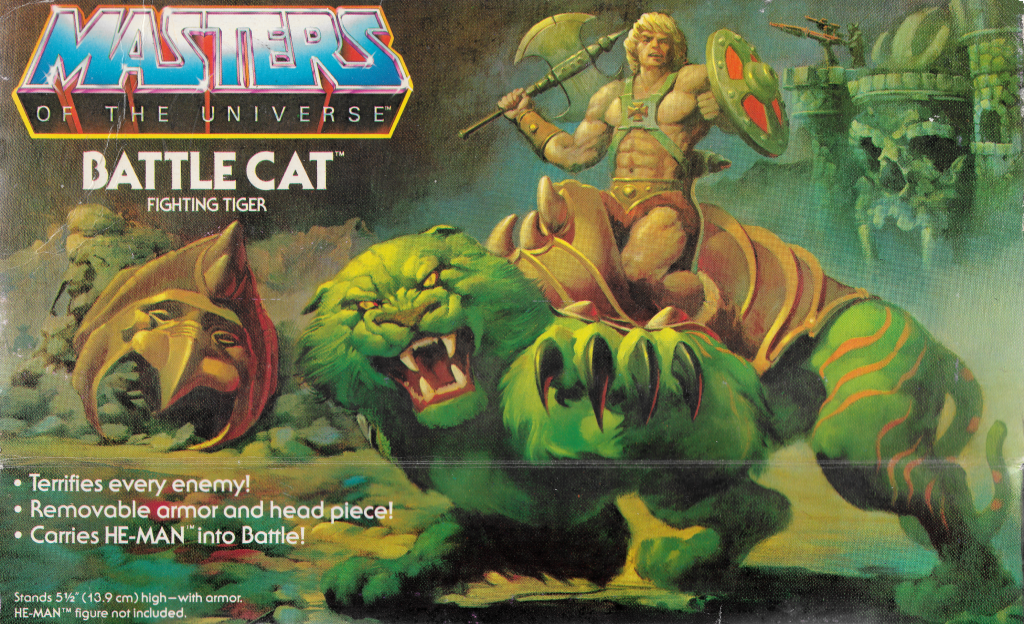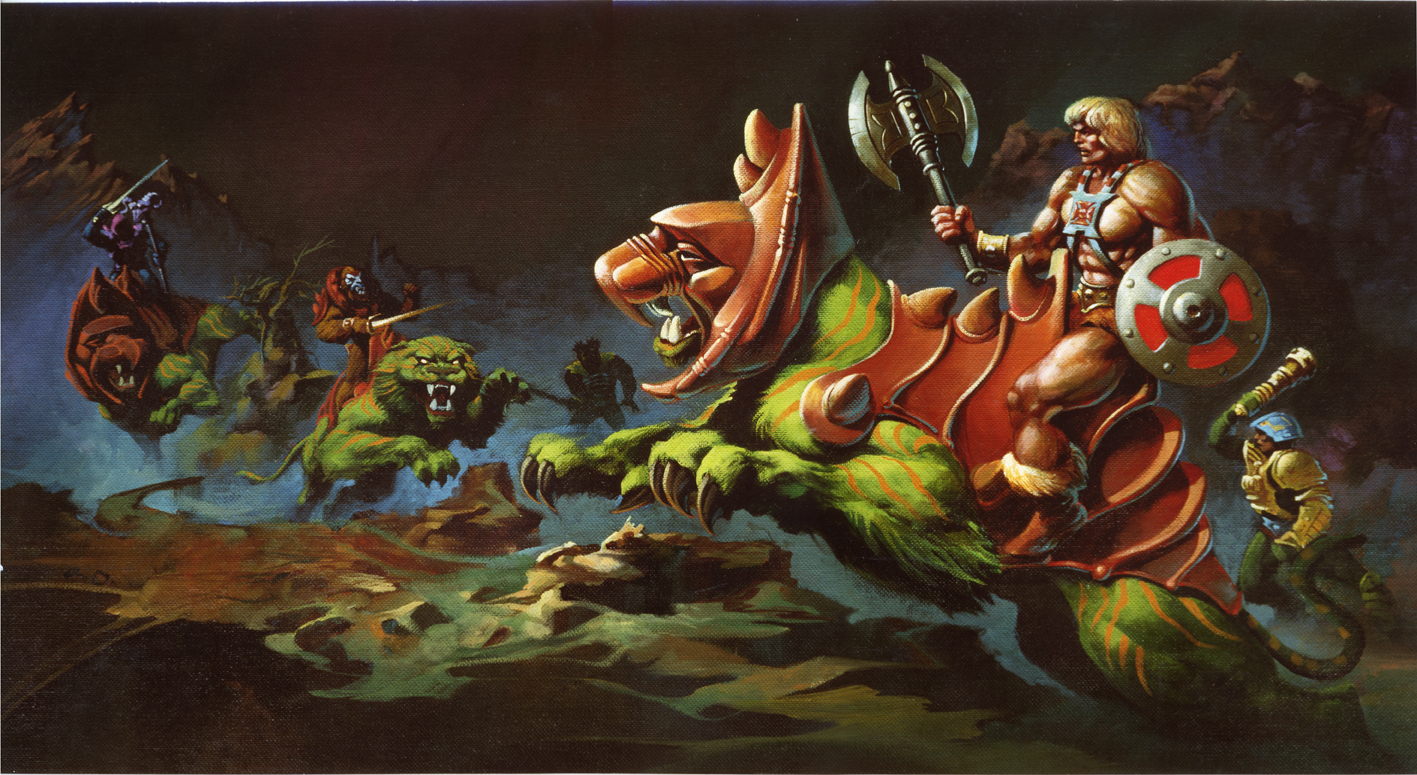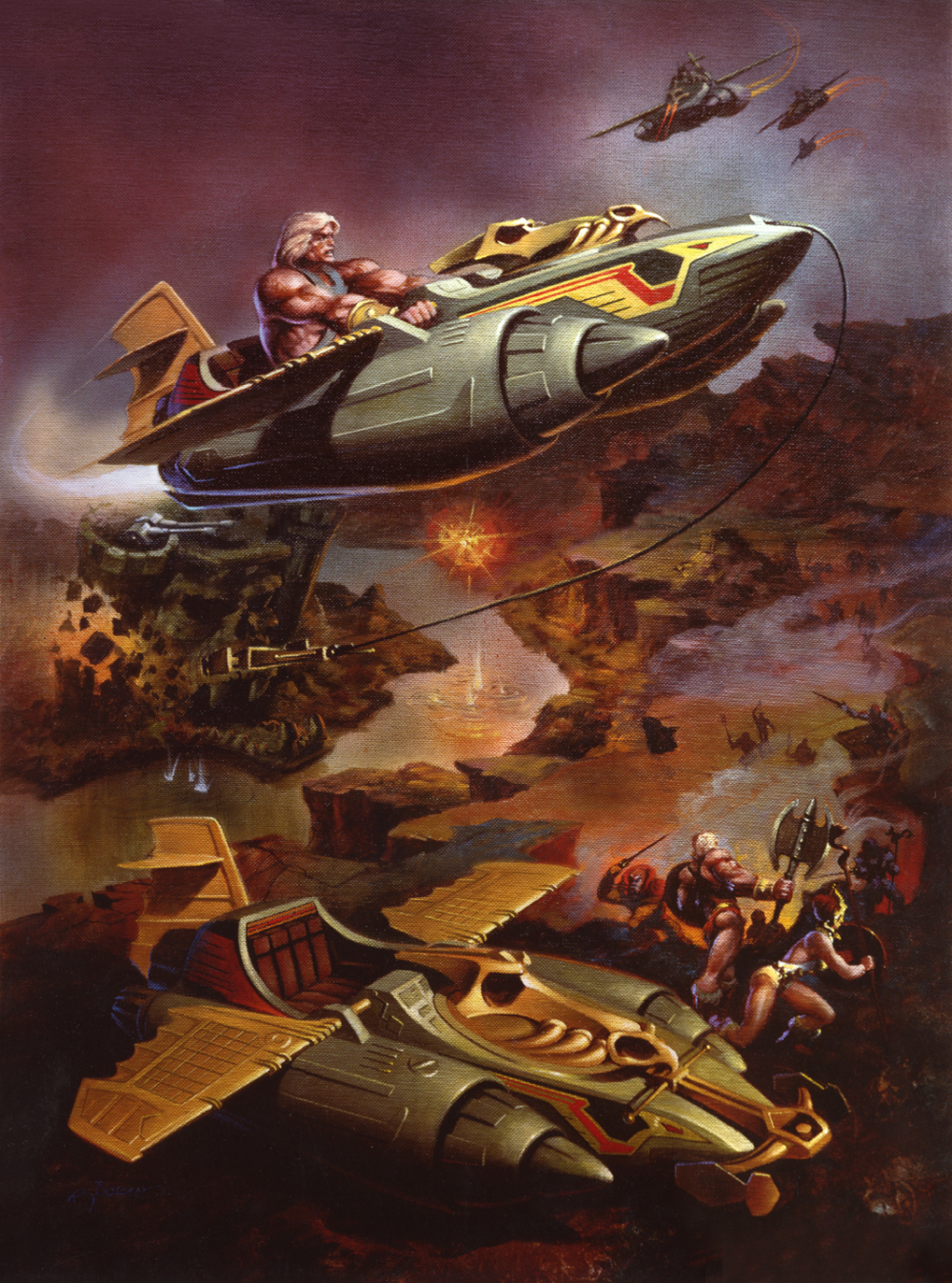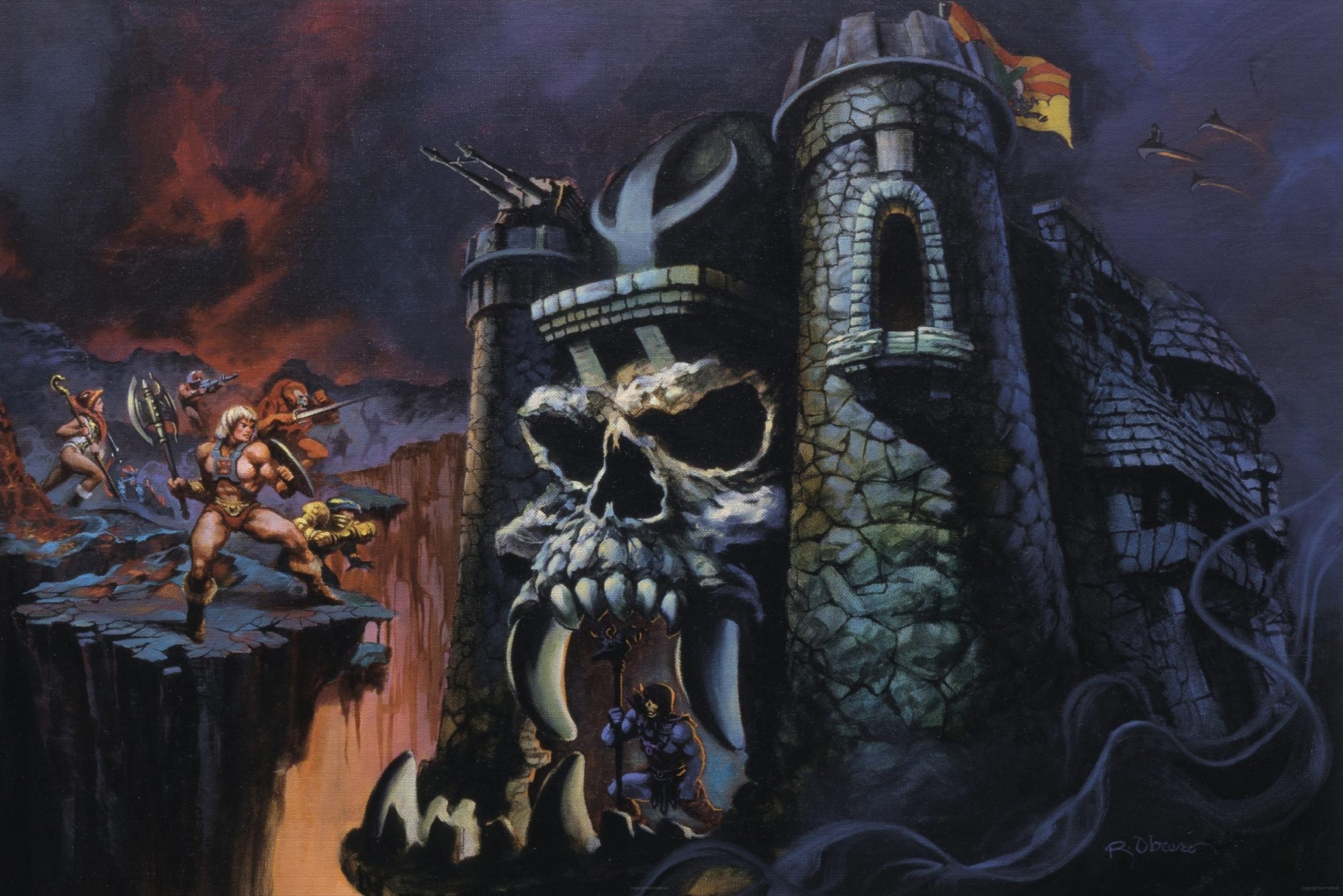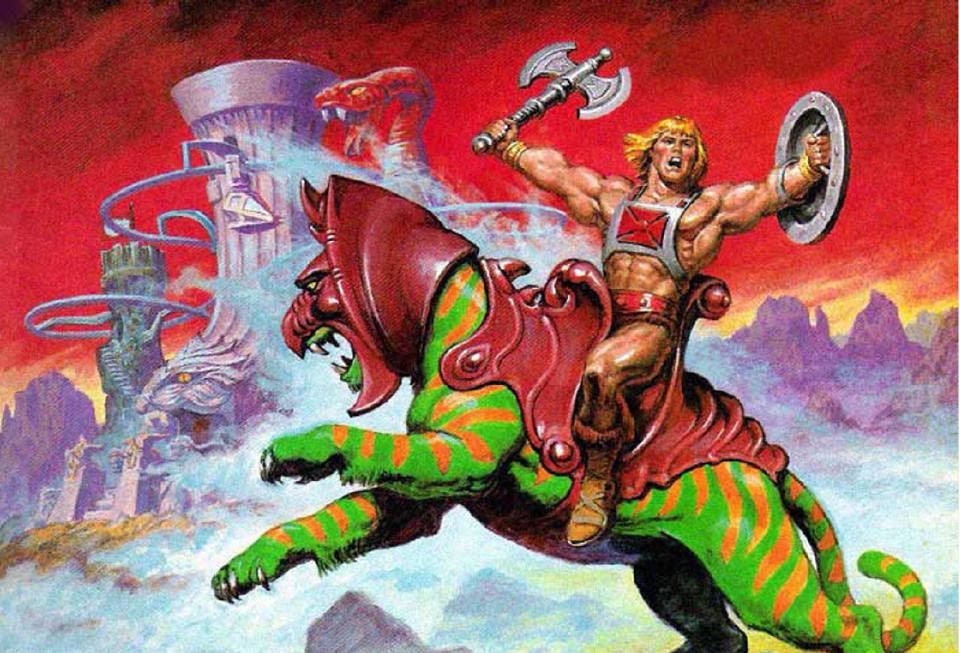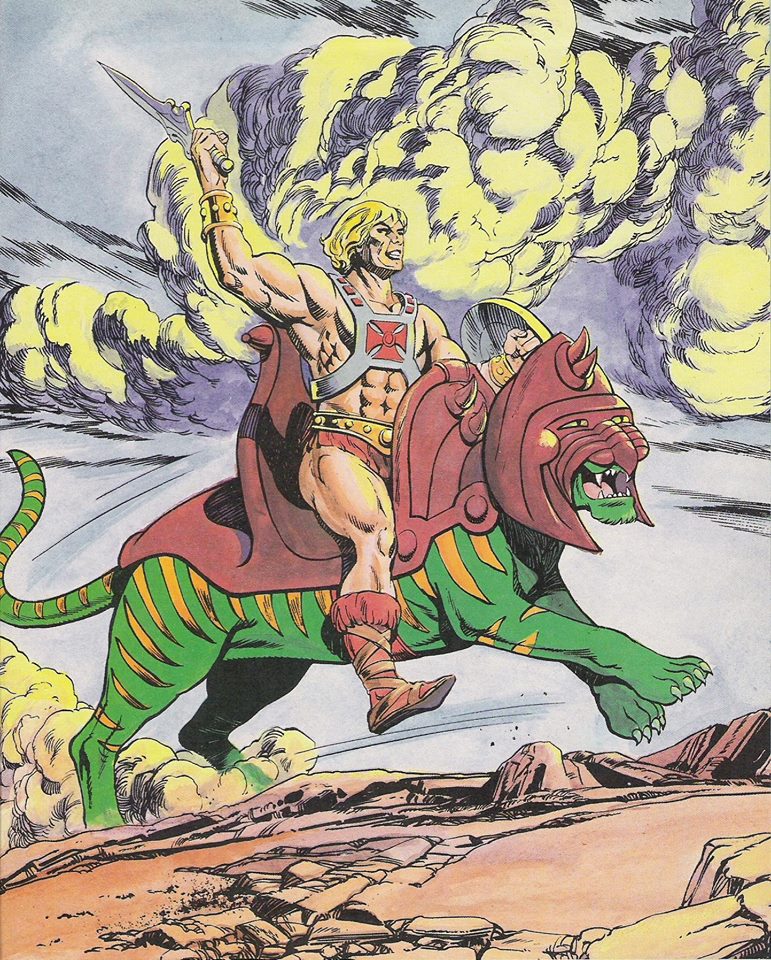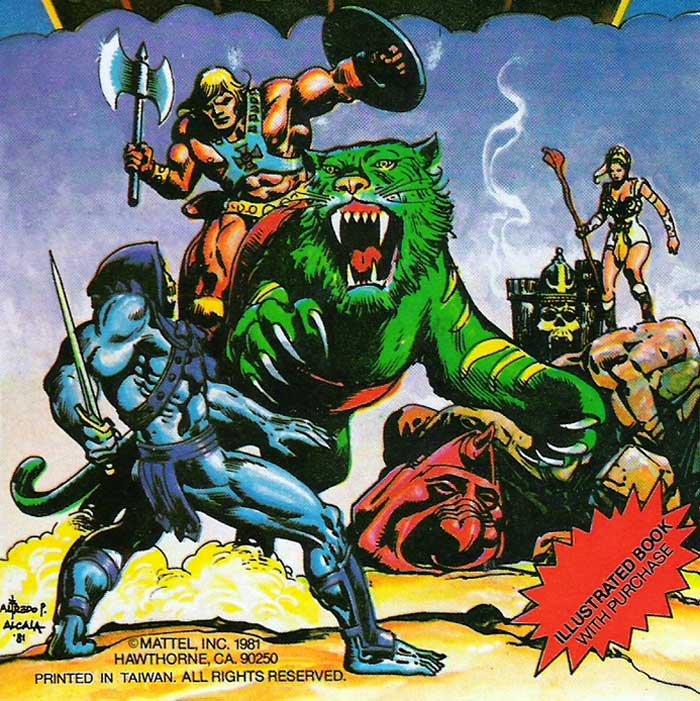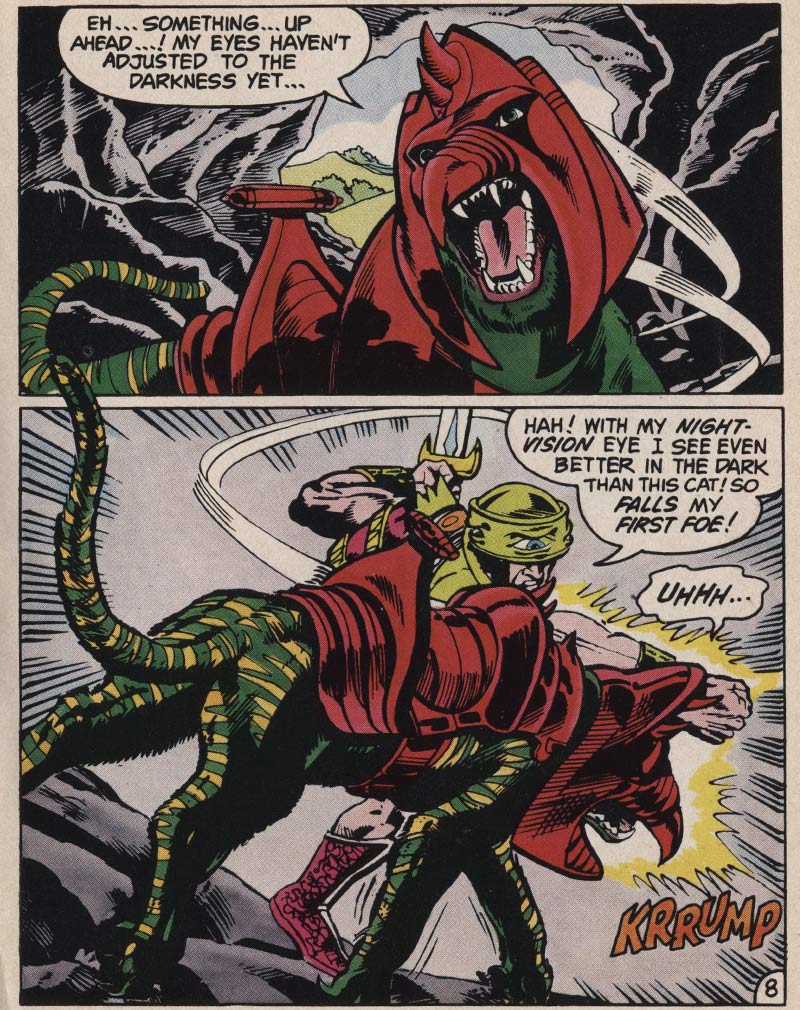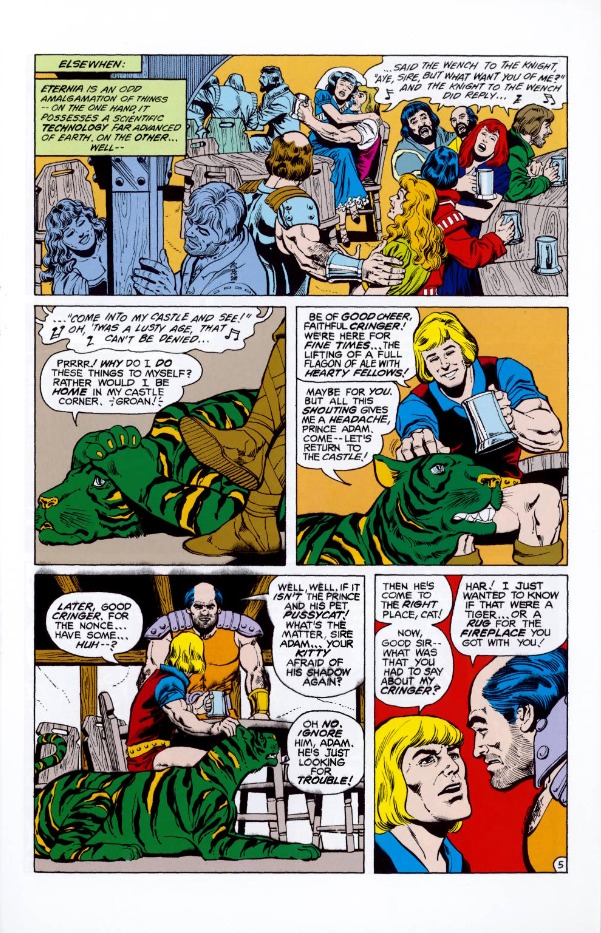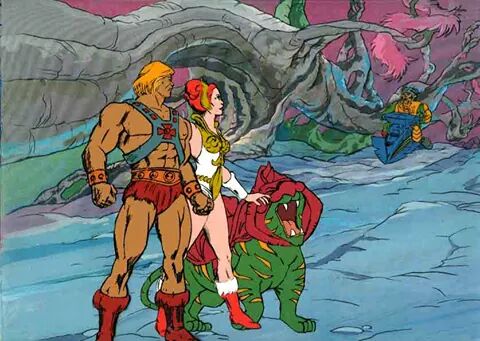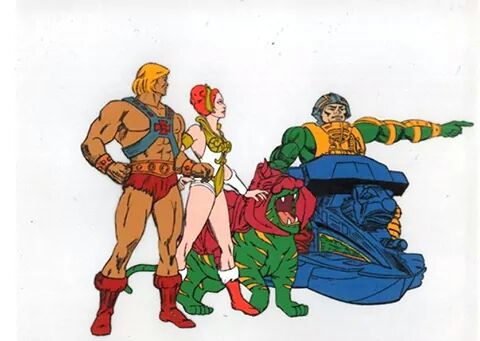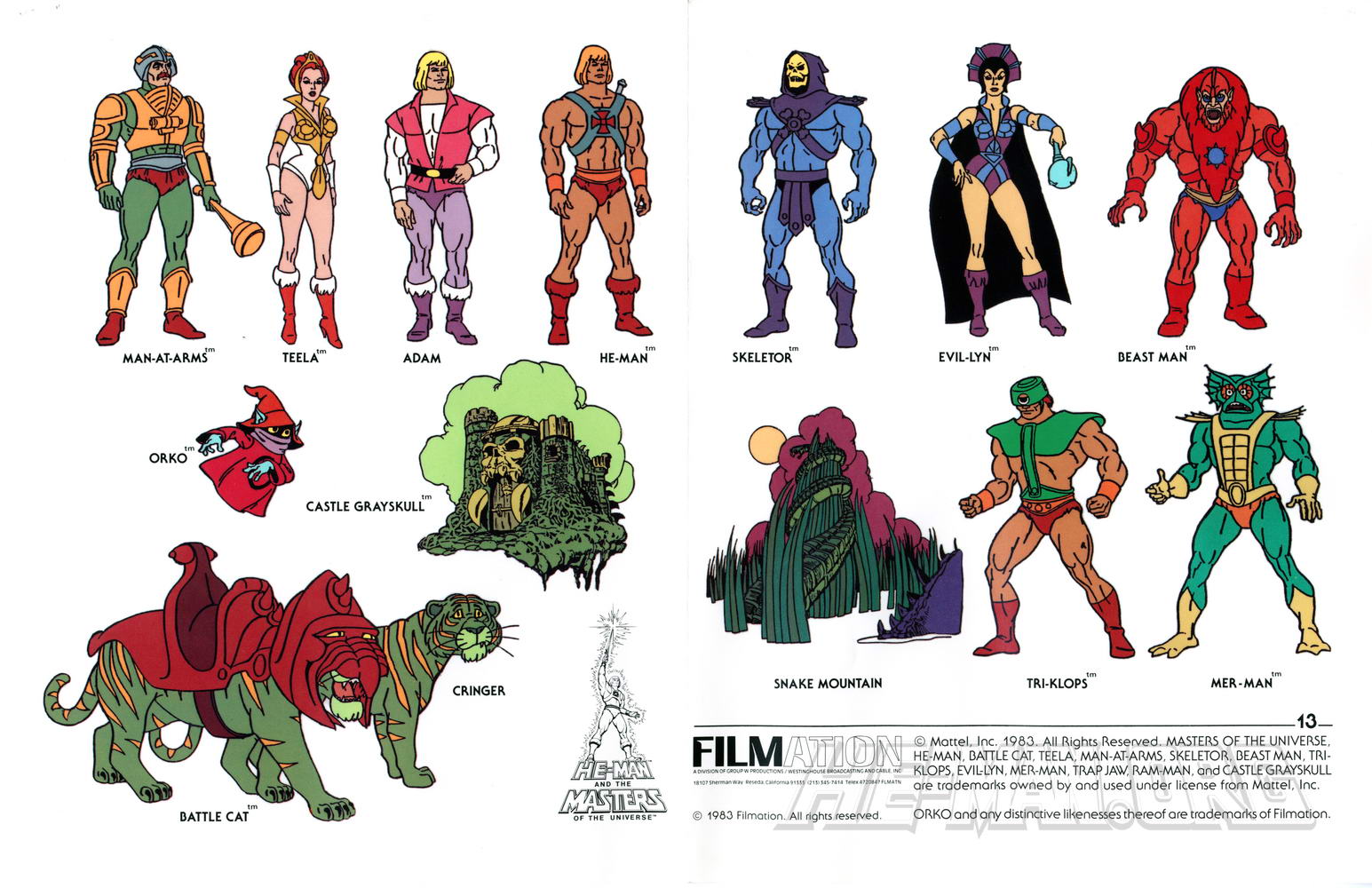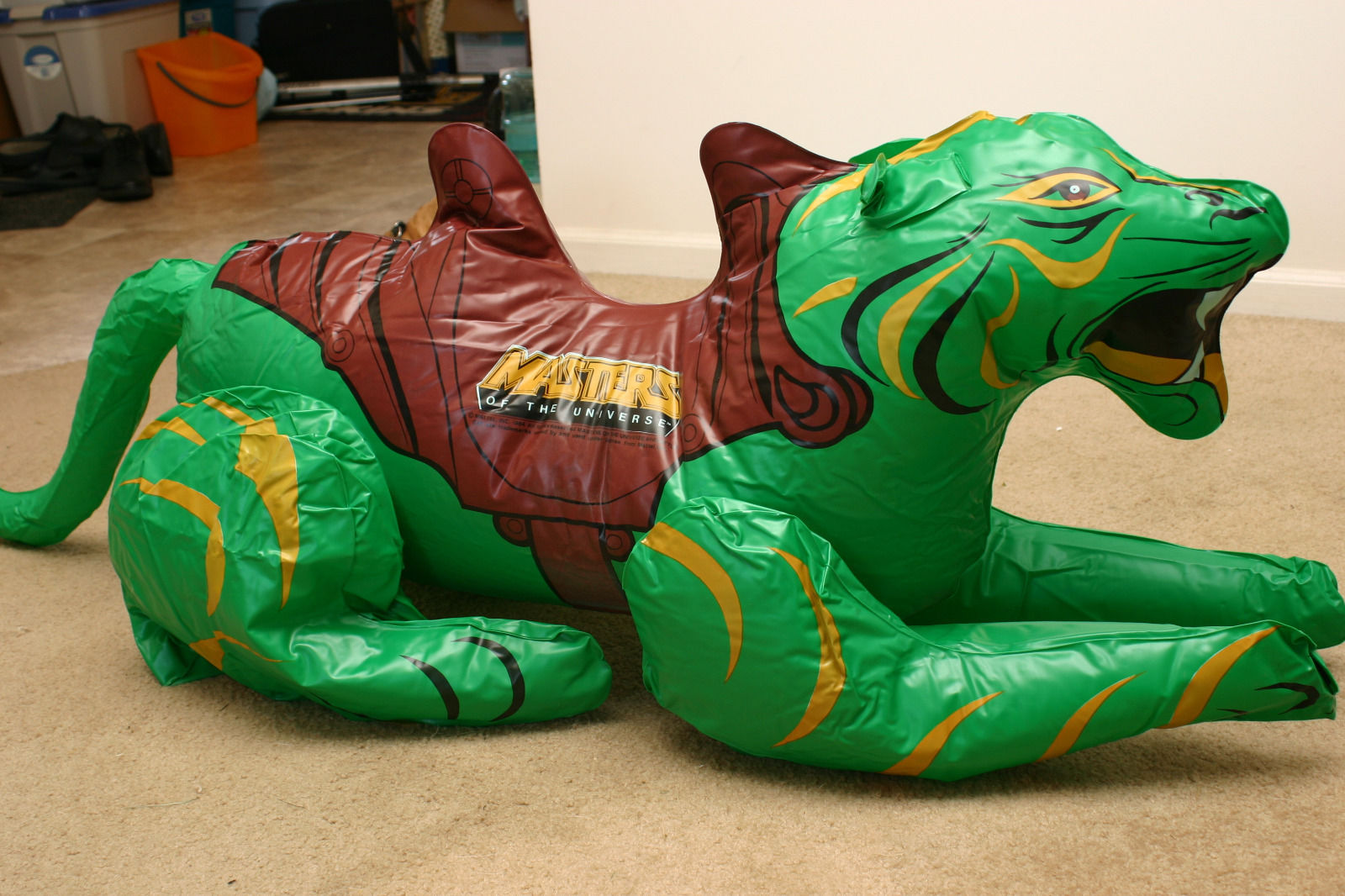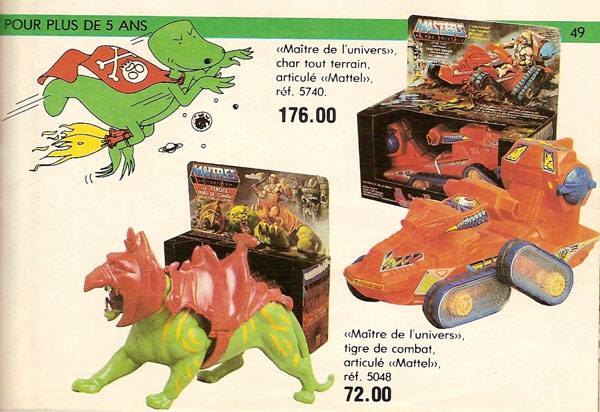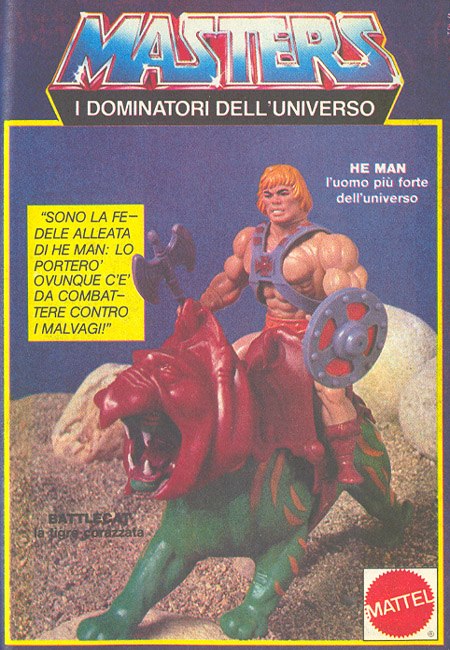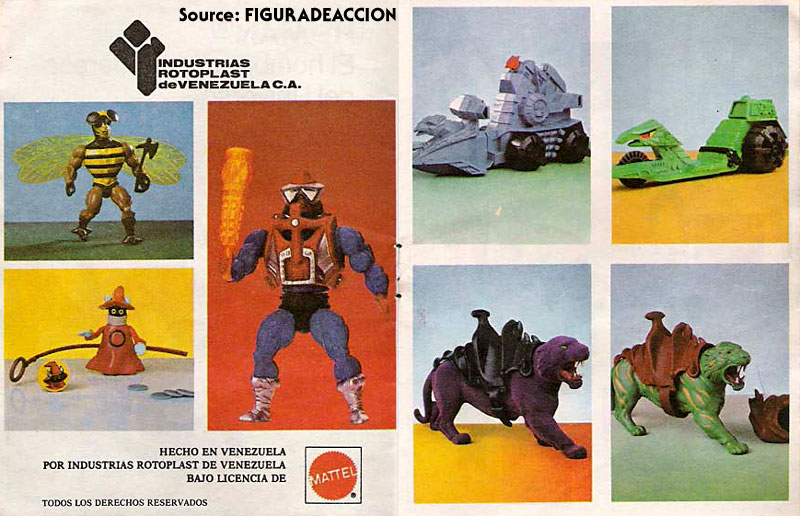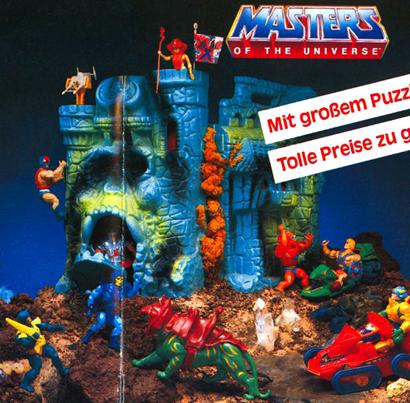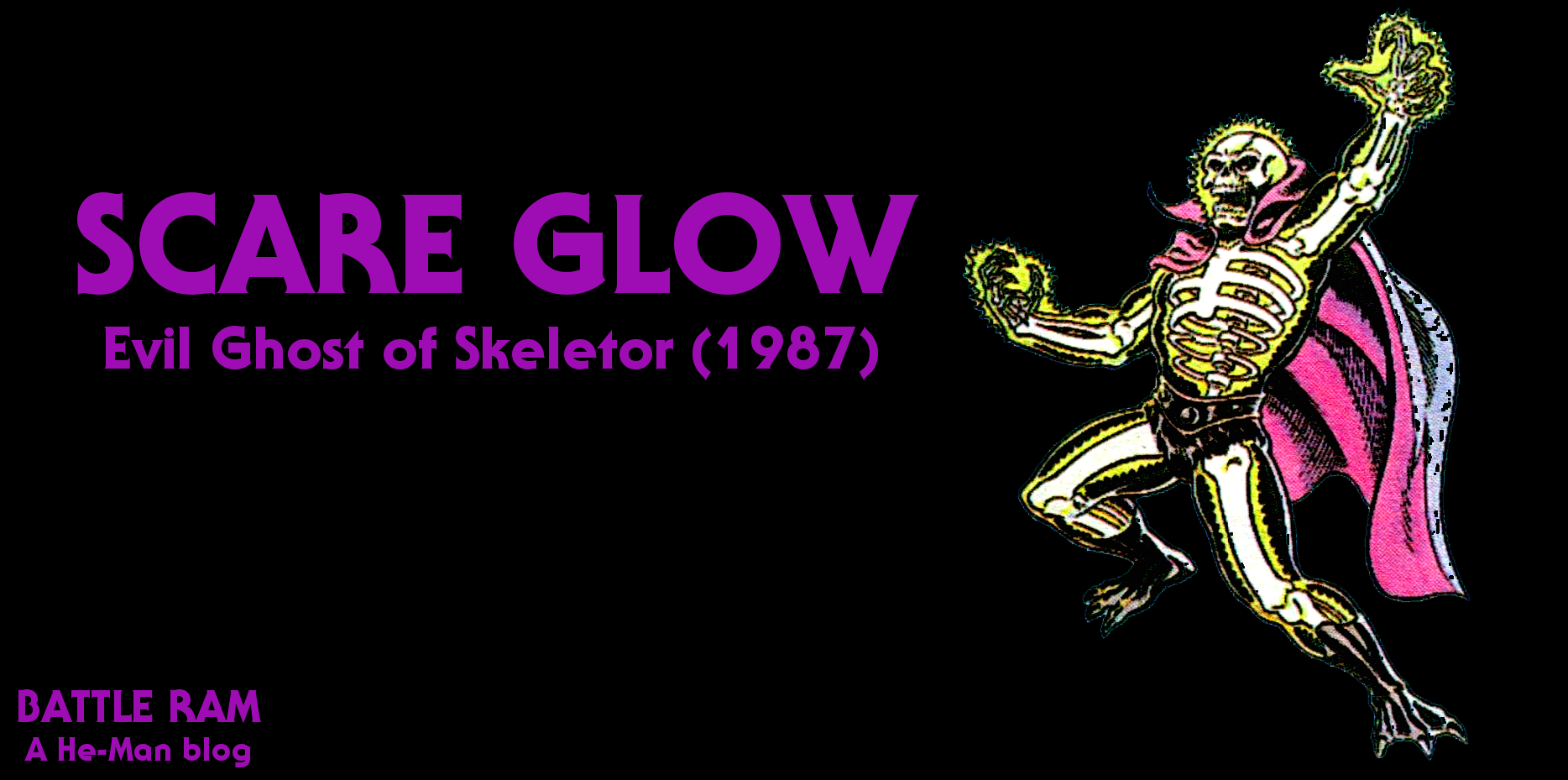
I wasn’t aware of Scare Glow’s existence when he was released in 1987, but when I finally saw him as an adult, he made perfect sense. Of course there needs to be a glow-in-the-dark skeleton man in Masters of the Universe. Why didn’t someone think of this sooner? Glow-in-the-dark accessories had been produced previously in the line (Evil-Lyn’s staff, the warrior ring that came with Tri-Klops and Trap Jaw), but never a glow-in-the-dark figure.

Imagery
Scare Glow seems to have been influenced by traditional imagery of the grim reaper. Unlike Skeletor, his entire body is a skeleton (or at least the closest thing to it without creating a newly sculpted body). He has a reaper-like cloak and the closest thing to a scythe in the existing library of Masters of the Universe weapons.
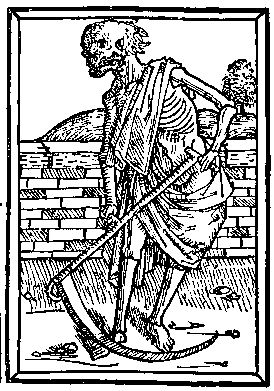
Parts Reuse & Design
Scareglow was released toward the end of the Masters of the Universe toyline. There seemed to be two categories of figures released in 1987 – figures that were made from newly sculpted parts (Mosquitor, Sorceress, Blast Attak) and figures that mostly reused existing parts, with only a new head and perhaps a new weapon (Ninjor, King Randor, Clamp Champ). Scare Glow is in the latter category.
Scare Glow reuses Skeletor’s body. Most versions reuse the legs from Dragon Blaster Skeletor (with slightly enlarged feet compared to the original Skeletor), but the Spanish version reused the original Skeletor legs. The poleaxe (referred to on the packaging as a “scythe of doom”, and in the style guide as a “spirit staff”) is reused from the Castle Grayskull weapons rack. He was given an all-new head and a new cloth cape. The figure was designed by David Wolfram.

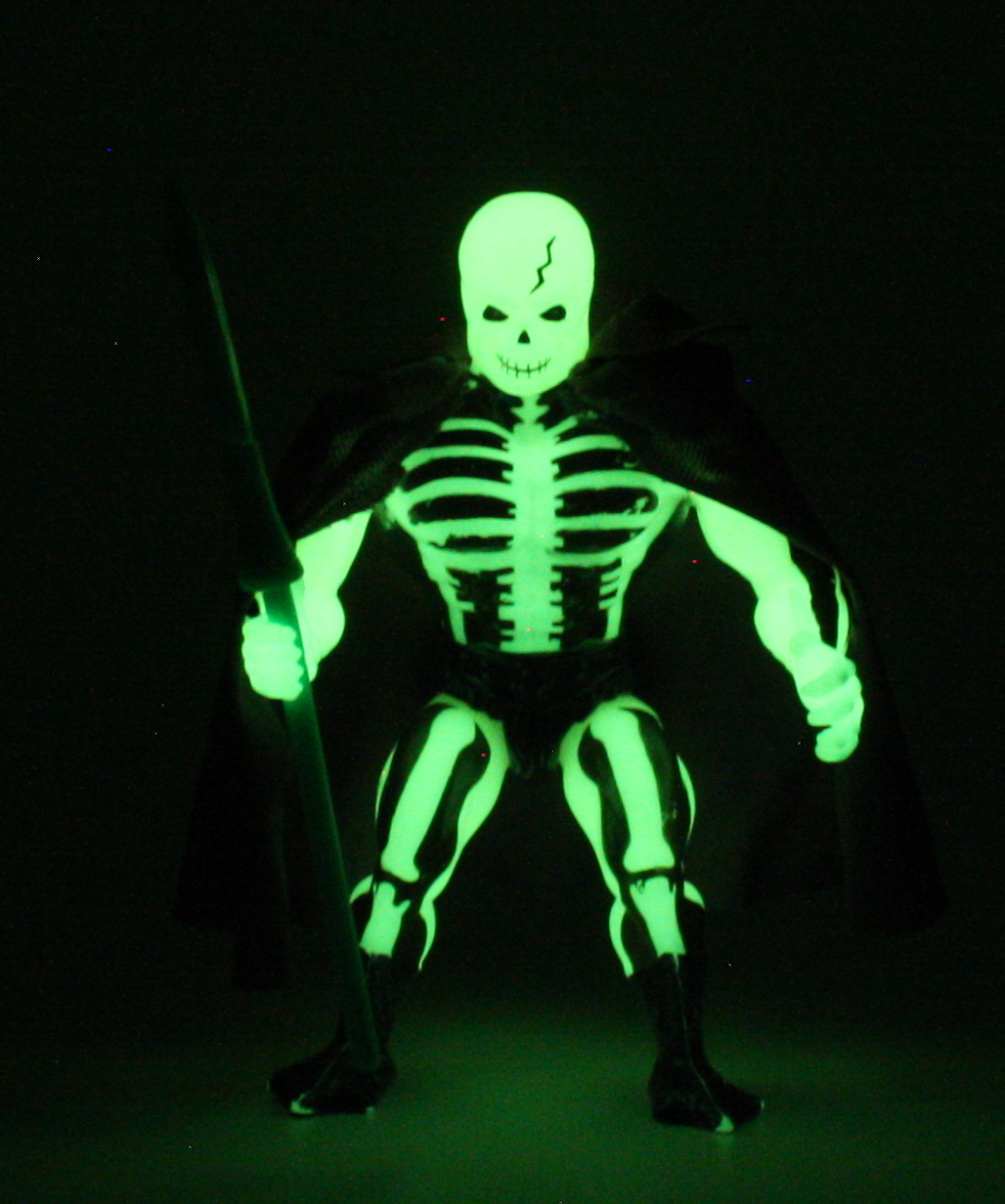
Scareglow’s weapon came in two flavors – bright green and glow-in-the-dark white. The white version was principally sold outside of the US and Canada.
Packaging
Scare Glow’s cross sell art, like most cross sell artwork after the 1983, is a pretty accurate representation of the figure:
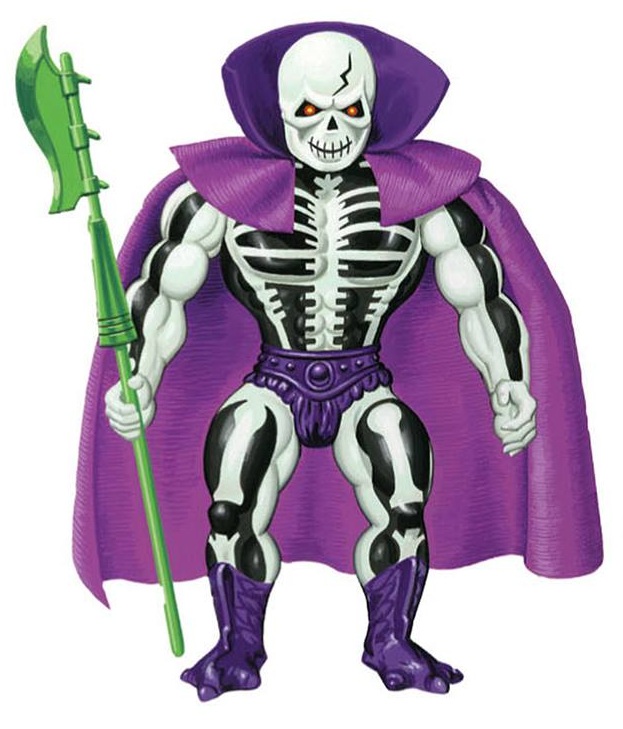
Like many other 1987 figures, Scare Glow came with some great artwork on the front of the card, illustrated by Bruce Timm:

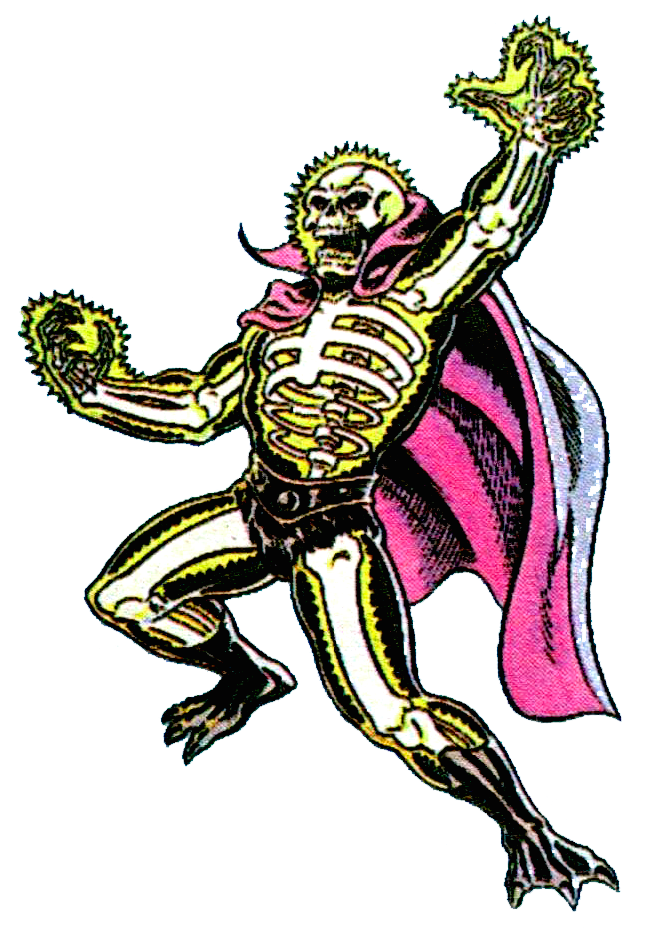
The back of the card features a somewhat comical scene of Scare Glow scaring the orange pants off of Snout Spout. The scene was illustrated by Errol McCarthy, who also created an illustration for the 1987 Style Guide:


Characterization & Stories

Given that Scare Glow’s tag line calls him the “Evil Ghost of Skeletor”, there has been debate among fans for years about whether or not Scare Glow is actually the ghost of Skeletor, or merely a ghost who serves Skeletor. The 1987 Mattel Style Guide says this about Scare Glow:
Skeletor conjured up this spirit in his own image to frighten travelers on the pathways of Eternia. Scare Glow is invisible during the daylight, but glows at night.
Unfortunately I don’t think this totally clears up the issue. From the short bio, Scare Glow could be Skeletor’s ghost, or he could be just a ghost who happens to have a skull face like Skeletor. In the mini comic, The Search For Keldor, Skeletor conjures up “the most evil beings of time and space” (Scare Glow and Ninjor). So it could be that Scare Glow really is a future, deader Skeletor. I tend to think that Scare Glow is not Skeletor’s own ghost, however. I think the intent was that Scare Glow was just a conjured being who happens to look a bit like Skeletor.


In Masters of the Universe Adventure Magazine issue 9, Skeletor creates Scare Glow in his own image, so it’s apparent they are not the same person in this continuity. As described in the style guide, Scare Glow can become invisible in the light:


In Star Comics Masters of the Universe issue 7, Skeletor calls Scare Glow his “ghostly double”. Scare Glow seems to be a true ethereal ghost, as Blast Attak’s fist passes through him when he attempts to punch him. Scare Glow also has the ability to fly:


Just to make things a little more confusing, this Greek advertisement referred to Scare Glow as Skeletor (the caption underneath his name roughly translates to “Scarier at night!” – thanks Jukka!):
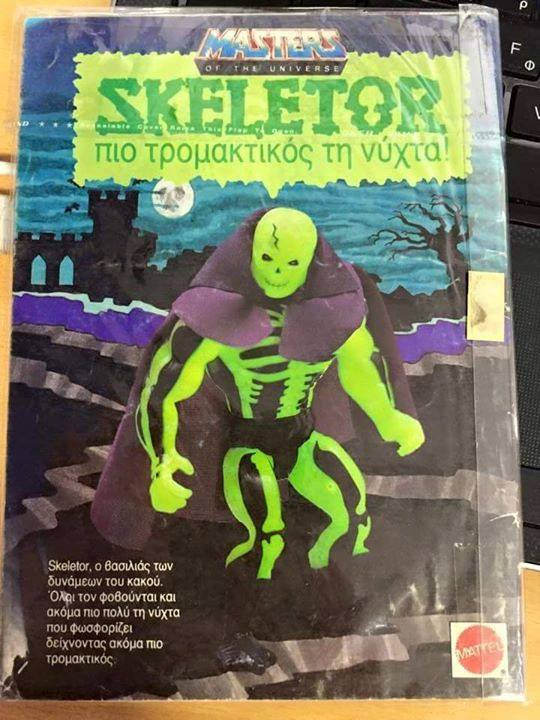
Other Artwork
Coming so late in the Masters of the Universe line, Scare Glow didn’t show up in a lot of artwork, but he was a background character in posters illustrated by William George and Esteban Maroto:



Advertising
He also showed up in a few catalog photos and advertisements:
Scare Glow in Action
Øyvind Meisfjord recently shared this image and short video of Scare Glow in action:

The scans of catalogs and advertisements used in this article came from Orange Slime, Grayskull Museum, and He-Man.org. The Errol McCarthy line art and comic book scans also came from He-Man.org.







